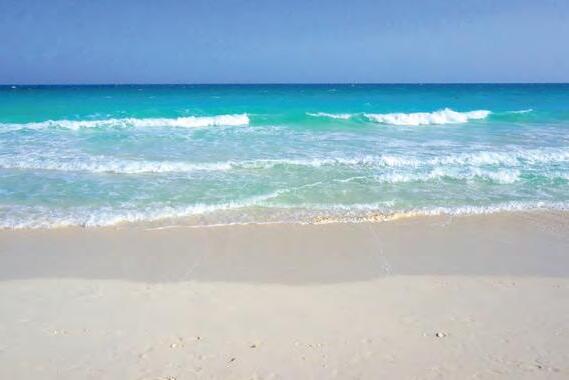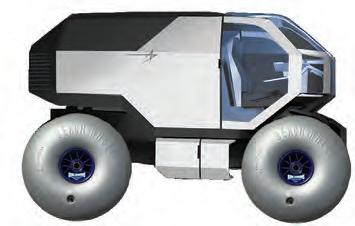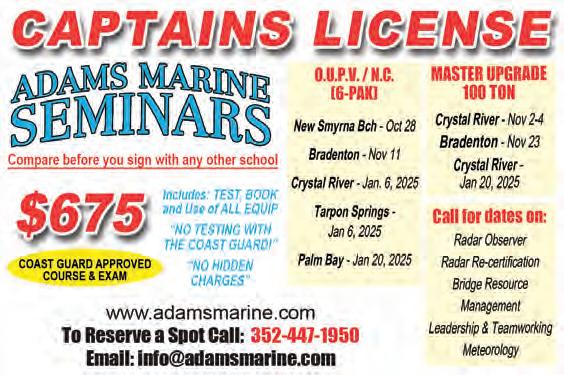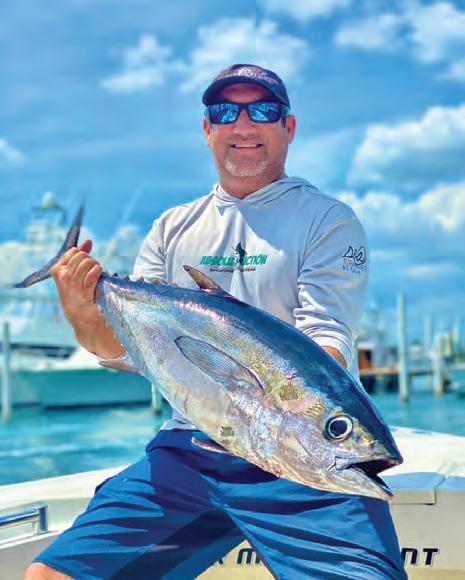





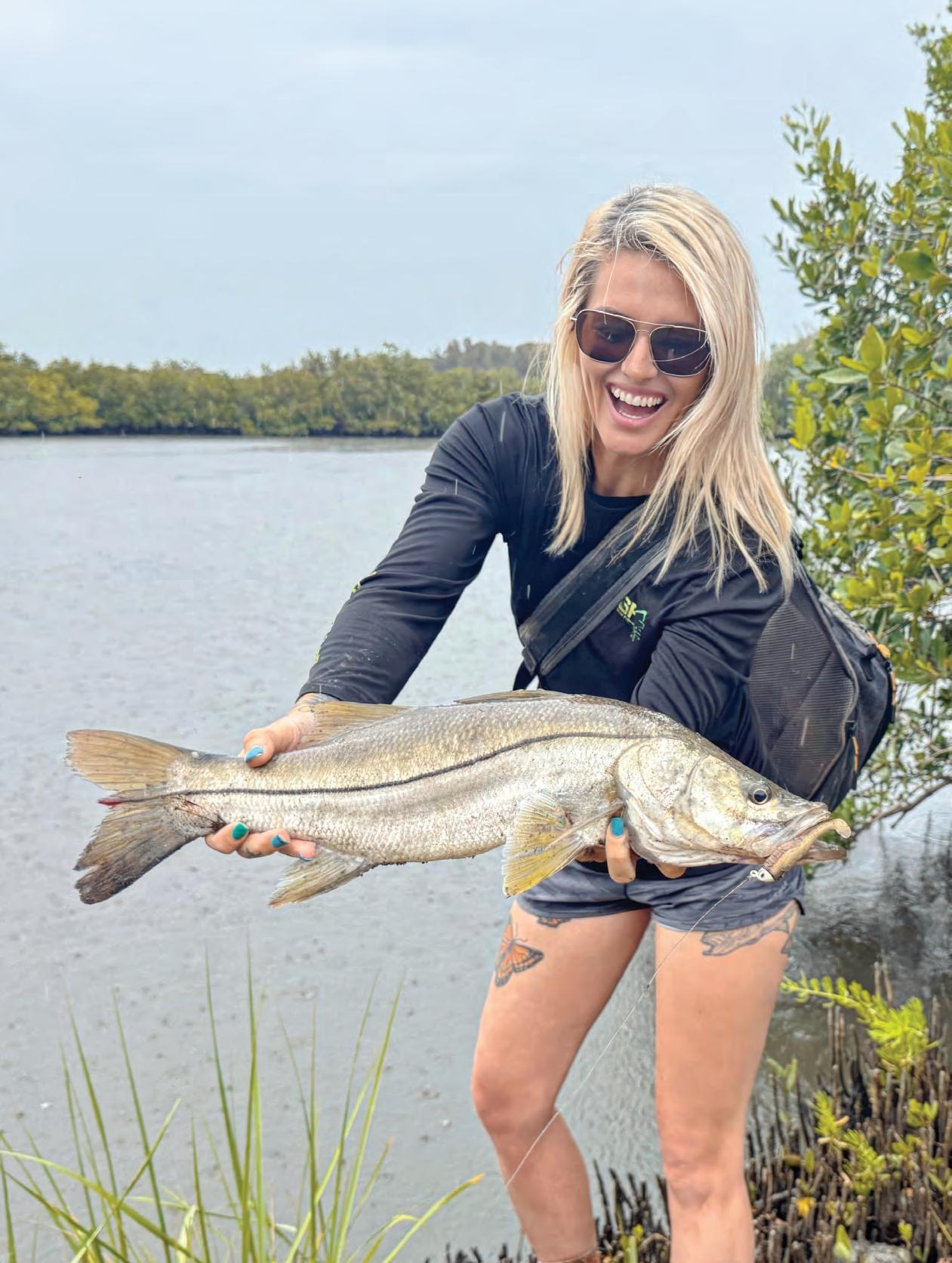
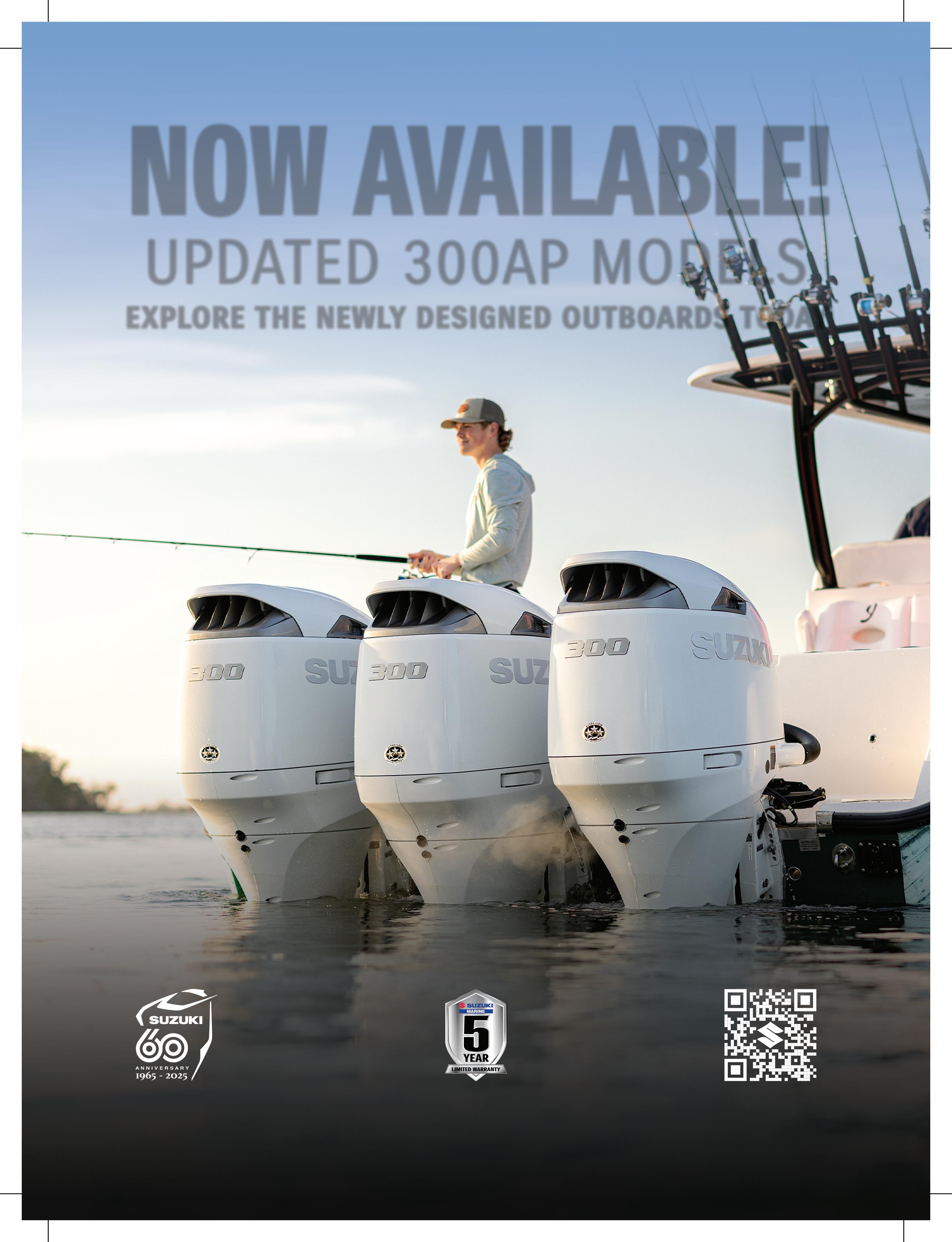


You want new charts?
You got new charts! Explore the ocean with vibrant terrain & depth shading, using all-new TZ MAPS. Don’t just take our word for it. See for yourself. Scan here, and we’ll show you!
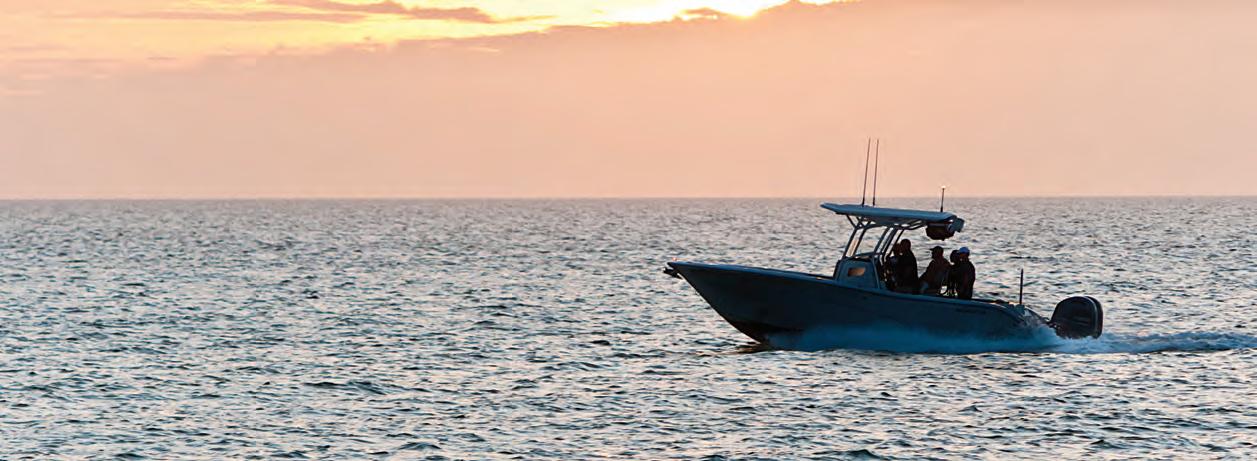
Are you ready to embark on your next on-water adventure? Before you set sail, here are fve things to know about boat insurance.
1. Boat insurance isn’t just for accidents
With comprehensive coverage, you’ll also be protected fnancially for theft, vandalism, and unexpected events like storms if you need repairs or replacements due to damage.
2. Accidents can happen to anyone
When accidents happen, boat insurance offers liability coverage for damages or injuries you cause while boating, up to specifed limits. It can also cover lawsuit costs if you’re sued.
3. Boat insurance can cover medical payments
Boat insurance offers a range of optional medical payments coverage limits, helping to cover medical expenses if you’re in an accident or someone is hurt on your boat, regardless of fault.
4. Most lenders require boat insurance
If you fnanced your boat, you’ll likely need boat insurance since most lenders require boat insurance to protect their investment. Additionally, some marinas or municipalities require proof of insurance for docking.
5. Progressive offers specialized boat coverages
Ever worry about getting stuck on the water?
Progressive’s Sign & Glide® On-Water Towing coverage** can help. It’s an additional coverage that steps in if your boat is disabled or breaks down on the water, paying for on-water towing, jump starts, soft ungroundings, and fuel delivery. Fuel cost isn’t included.
Don’t let unforeseen circumstances disrupt your voyage. Cruise with confdence thanks to Progressive Boat insurance. Because when it comes to your boat, peace of mind is the ultimate luxury.
Scan to get a quote in as little as 4 minutes.
to learn more.



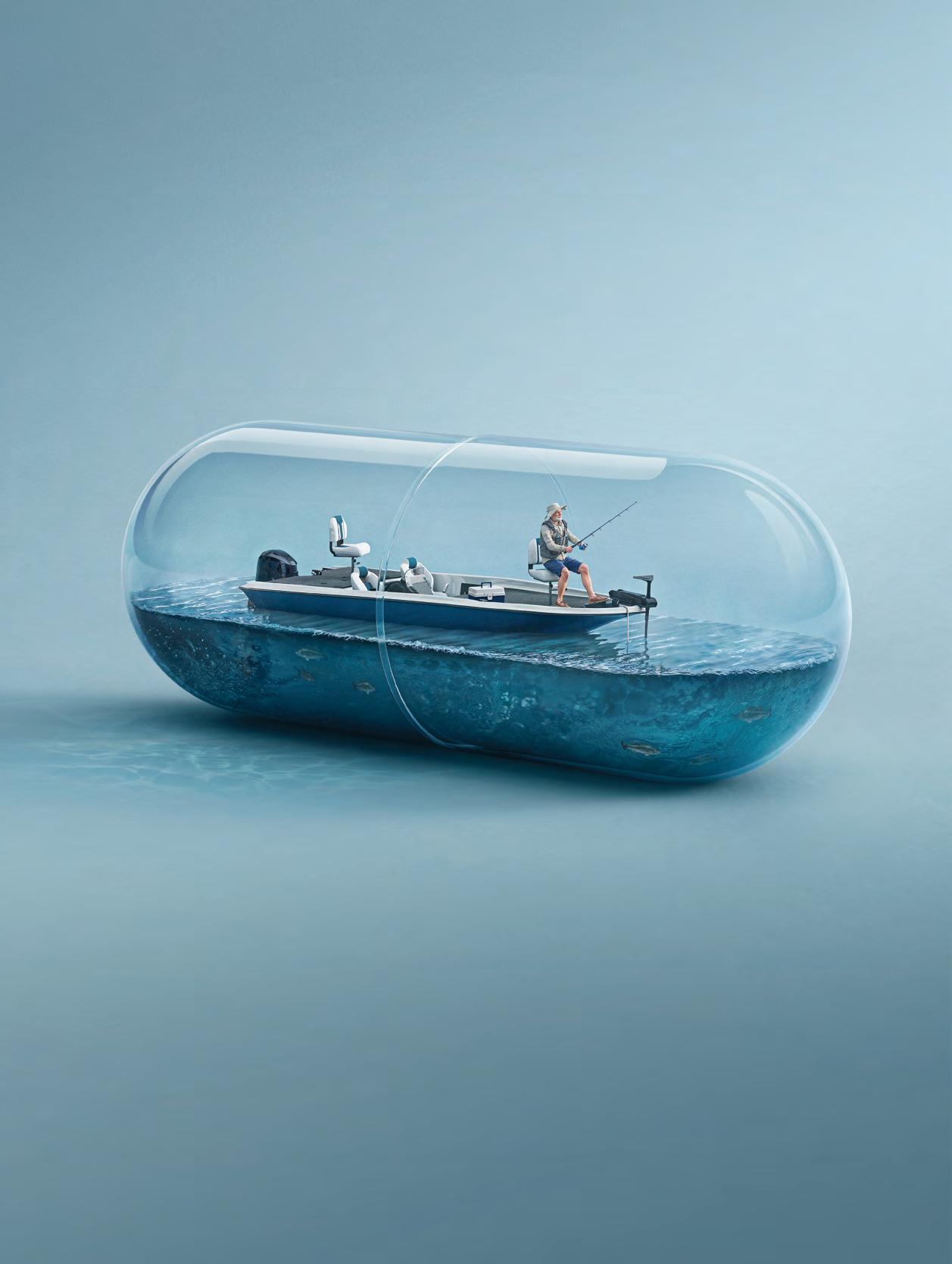
















By Skye Burkhardt
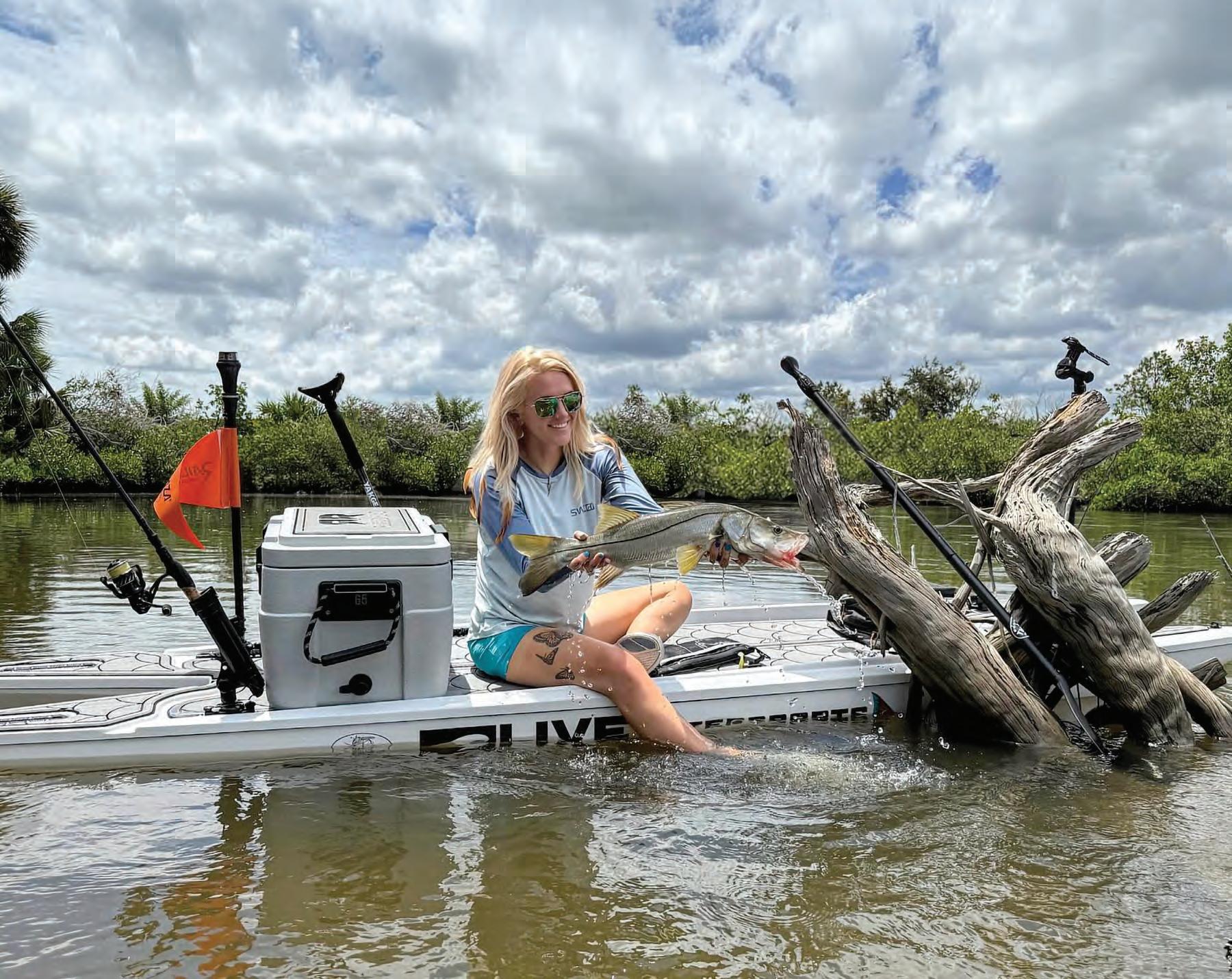
In recent years, paddleboard !shing has quietly emerged as one of the most immersive and rewarding ways to !sh, particularly in the backwaters where nature whispers and big !sh lurk in shallow, untouched waters. Combining the stealth of a kayak with the freedom and perspective of stand-up paddling, paddleboard !shing o ers a unique experience that connects anglers to their environment in a deeply personal way. You become part of the environment—just another element in a quiet, dynamic system. Every ripple matters, every shadow could be a !sh. It’s !shing stripped to its essentials: a board, a rod, and your wits.
Backwaters—those slow-moving or stagnant tributaries and tidal creeks separated from larger bodies of water—are havens for !sh and wildlife. ey’re o en shallow, weedy, and di cult to access with motorboats, making them ideal for paddleboards. ese secluded waterways harbor species like red!sh, snook, bass, tarpon, and trout, depending on your region. e calm water allows for sight !shing and careful stalking, while the surrounding vegetation provides natural structure and cover for !sh. For anglers seeking peace, solitude, and the thrill of spotting and targeting !sh in crystal-clear shallows, backwaters are unmatched.
Paddleboards o er several distinct advantages in the backwaters:
• Maneuverability: ey can access shallow and narrow areas where boats can’t go.
• Stealth: Paddleboards glide silently, allowing
you to approach !sh without disturbing them.
• Sight Fishing: Standing gives anglers a better vantage point to see !sh and structure below the surface.
• Portability: Easy to transport and launch, paddleboards can be carried to remote areas with little e ort.
• Minimal Impact: Paddleboards have a low environmental footprint, making them a great choice for conservation-minded anglers.
Fishing from a paddleboard requires packing smart. Space is limited, so prioritize:
• Rod and Reel: A medium-action spinning setup is versatile for most species.
• Tackle Box: A compact, waterproof tackle box with your go-to lures, so plastics, hooks and leaders.
• Anchor or Stakeout Pole: To hold position in wind or current.
• Cooler: Dual-purpose for storage and seating.
• PFD (Personal Flotation Device): Required by law and essential for safety.
• Dry Bag: Keep your phone, wallet, and other valuables safe.
• Sun Protection: Hat, polarized sunglasses, and sunscreen are must-haves.
1. Practice Paddle Control: Master basic paddling and balance techniques before trying to !sh while standing.
2. Stay Organized: Use carabiners and bungee cords to keep gear secure and accessible.
3. Scout the Water: Stand and scan for tailing
!sh, bait activity, or subtle ripples.
4. Be Patient: Quietly dri or pole through likely spots, and avoid sudden movements.
5. Time Your Trip: Early morning and late evening o er cooler temps, calmer water, and more active !sh.
Paddleboard !shing in the backwaters is more than a hobby—it’s a return to simplicity and intimacy with nature. It’s a growing movement that emphasizes low-impact adventure, selfreliance, and a deep appreciation for wild, o en overlooked places. Whether you’re targeting snook in a mangrove tunnel, bass in a hidden freshwater creek, or red!sh on a mud at, the experience of !shing from a paddleboard is less about the catch and more about the connection— to the water, the !sh, and yourself. For anglers ready to trade noise and crowds for silence and solitude, the backwaters await.
If you’re interested in paddleboard !shing, but don’t have the equipment or gear, be sure to enter my “Ultimate Halloween Paddleboard Fishing Package” giveaway presented by Coastal Angler Magazine, where you could score a “Tricked Out” Live Watersports paddleboard equipped with an ePropulsion eLite electric motor, paddleboard !shing gear and accessories, apparel and more! Scan the code in the ad on the next page or visit coastalanglermag.com/CAM-giveaway for more details and to enter.
Find Skye Burkhardt on Facebook at “Inshore Adventures With Skye,” and on Instagram: @brassyangler87.



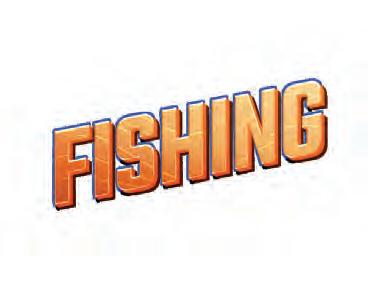




















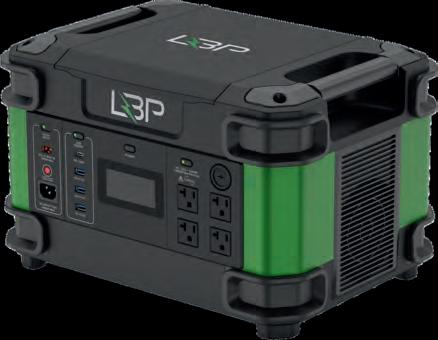




Lithium Battery Power (LBP), a leading innovator in advanced battery solutions, has taken top honors in the Energy category at the 2025 International Convention of Allied Sport!shing Trades (ICAST). e company’s groundbreaking Powerbox 2.5 kW / Solar Panel Lithium Battery Charging System was awarded the Best of Category: Energy, signaling a major leap forward in sustainable, high-performance energy technology for anglers and outdoor enthusiasts.
Held annually in Orlando, ICAST is recognized as the world’s largest sport!shing trade show and a hub for innovation within the industry. Each year, hundreds of new products are submitted for consideration across multiple categories, but only the most impressive make it to the winner’s circle. LBP’s Powerbox system stood out for its combination of portability, power, and green energy integration. e award-winning Powerbox 2.5 kW system delivers robust, reliable energy storage and output
in a compact, rugged form factor. It’s designed to meet the demanding needs of outdoor enthusiasts who rely on consistent power in o -grid environments. Integrated with a high-e ciency solar charging panel, the system ensures power sustainability even during extended trips, reducing the need for fuel-powered generators or frequent dock visits.
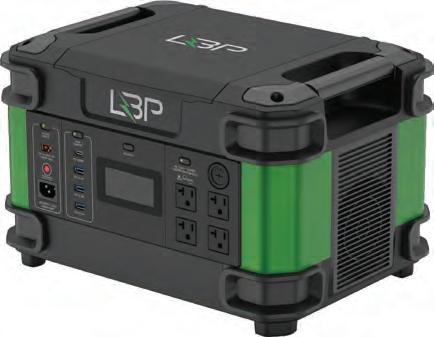

outages, hurricanes and critical jobsite power along with the heavy 12 volt demands in marine environments got their attention over all others in the Energy category.
“We are honored to receive this recognition at ICAST,” said Don Mitchell, Sales Director for Lithium Battery Power. “Our goal has always been to push the boundaries of battery technology while supporting eco-conscious outdoor recreation. e Powerbox system is a direct response to what today’s anglers need— power that lasts, in a package that’s smart, clean, and easy to use.”
e judges at ICAST praised the Powerbox for its innovative design, versatility, and emphasis on clean energy. Weekend power
is win marks a signi!cant milestone for Lithium Battery Power, reinforcing its position as a leader in the renewable energy sector within recreational vehicle and marine markets.
As the industry shi s toward more sustainable and e cient energy solutions, Lithium Battery Power’s win at ICAST 2025 signals that the future of on-the-water power is not just electric - it’s solar, smart, and built for adventure.

By Will Schmidt
If you have spent any time bottom !shing you know that occasionally on the heaviest of tackle you can outsmart a big snapper and end up with a solid !sh. Other days you can struggle to get even shorts. If you really want to up your game, it is time to lighten up.
When I say light, I mean straight 20 or 30lb mono and light wire 3/0 hooks. You may get broken o at times, but it is worth it for a box full of stud mangos and ARS. My go to big snapper setups is G Loomis IMX Pro Blues 843 casting rod with Shimano Trinadad TN20. is out!t is light, sensitive, and deadly on snapper. Some might like a bit lighter action rod but I have found that even with straight 20lb test you can really put a lot of pressure on these !sh and the backbone is nice to get them o the bottom as quickly as you can. A bit heaver is also nice when that grouper inevitably grabs the bait.
Here is a pro tip. One of the key elements for success to get big snapper, especially mangos, is the ability to react fast. Snapper get their name because they will o en quickly snap at a bait and then release it. With these sensitive rods and a gear ration of 6.2 to 1 you can pick up 46 inches of line in a single turn. A sensitive rod and a fast
reel means when you feel that tap, you can come tight instantly even in deep water. Remember you must use circle hooks so reeling vs setting the hook is the way to connect to these A fast reel might be the most important tool when snapper !shing.
My go to bait is a live pin!sh because, everything eats a pin!sh. I like having a livewell full of nice hand size pins. I do also use thread!ns both live and dead. read are great baits, but a good stout live 7 inch thread is remarkably strong and can be tough to get to the bottom as they swim o with your lead. at means dead threads can be easier to get to the strike zone. Cut the heads and tails o and make a thread “plug.” read “plugs” are awesome for snapper bait especially when live bait is not available. If hook ups are tough, I will double up my hooks, snelling 2 circle hooks close together and getting both hidden inside the plug to increase my hookup ratio. Regardless, I use 3 to 4 feet of mono leader then a swivel and a 3 ounce lead to hold the rig right on the bottom.

light and you will likely !nd the results are worth it.

Whether you really want to target big snapper or the bite is just really tough, try going
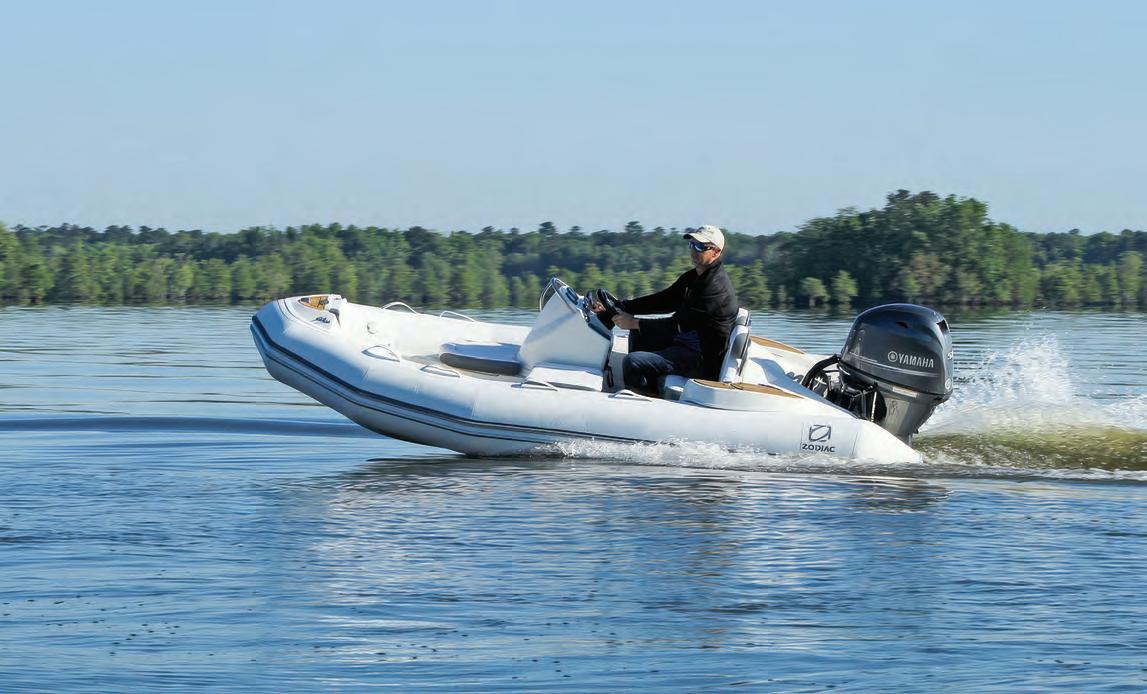
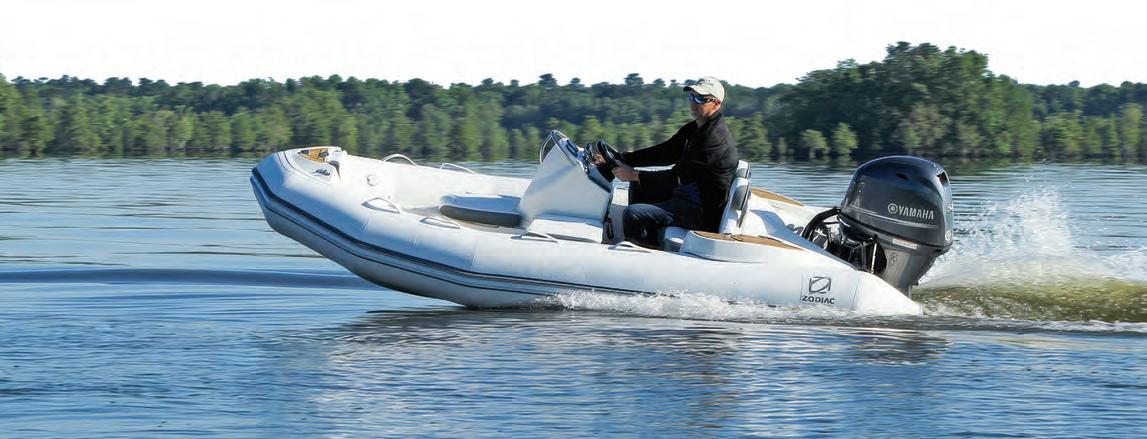



By A. deGruchy
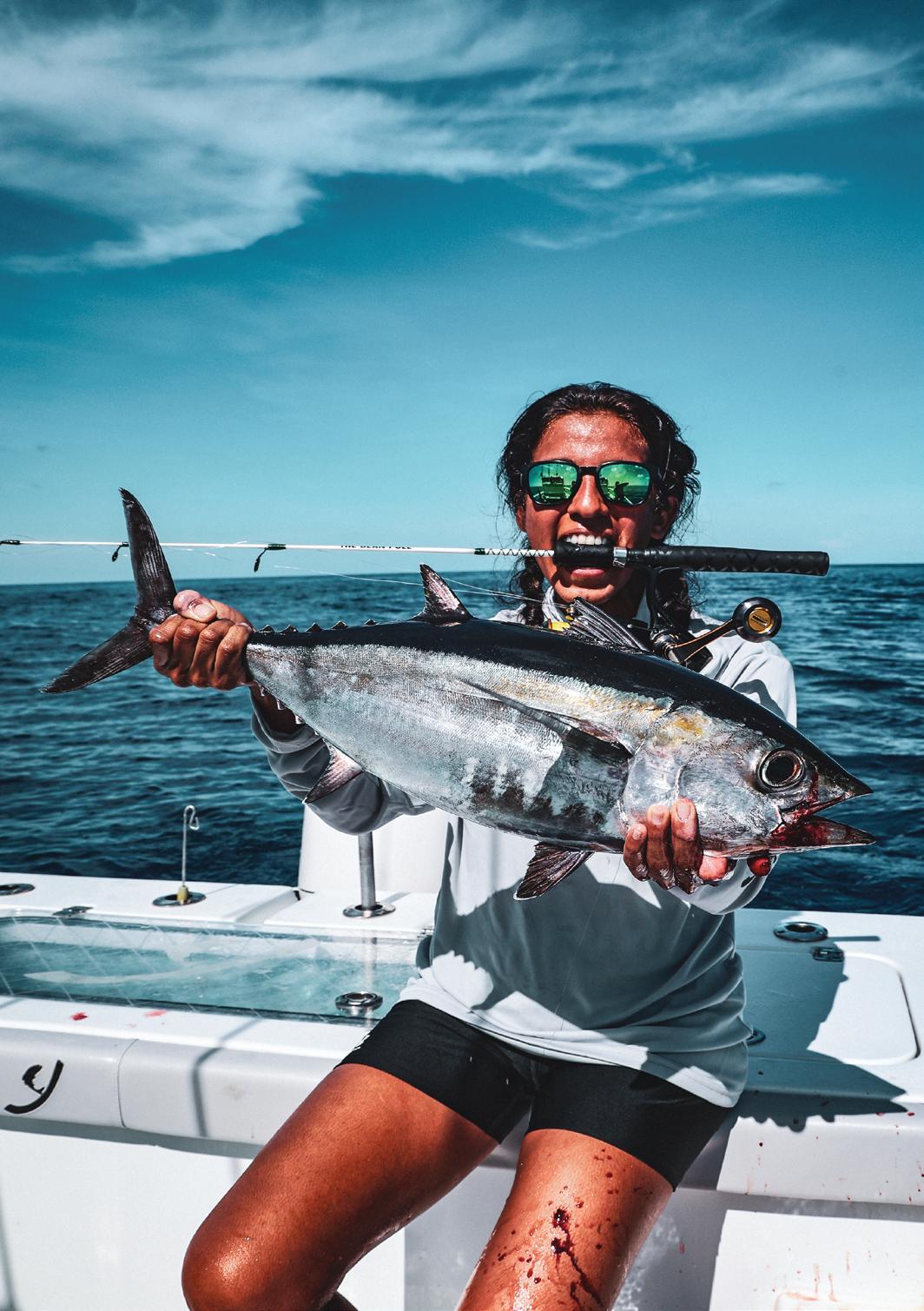
Late summer in the Florida Keys means steady black!n tuna action. Look for them around o shore humps like Marathon and Islamorada, especially early in the morning, and over wrecks in 200 to 600 feet of water.
Troll small feathers, ballyhoo, or bonito strips when the !sh are feeding near the surface. If they’re holding deeper, vertical jigging is the way to go. Savage Gear jigs in the 100 to 200 gram range work great. Drop them straight down and work them quickly to trigger bites.
For gear, the new Penn Spin!sher VII combo in the 4500 to 6500 size is a solid choice. Spool it with 30 to 50 pound braid and 30 pound uoro. It’s a strong and smooth setup that handles tuna with ease.
Watch for bird activity like frigates and terns diving. at usually means tuna are pushing bait to the surface. And always !sh with respect. Don’t troll behind another boat or crowd or someone who is already on a school. Give space and enjoy the bite.
Black!n tuna grade is better than blue!n in my opinion; you can eat it raw, do poke bowls, sushi rolls or sear it with sesame seeds!
Be sure to follow deGruchy’s adventures on YouTube (Bean Sport shing TV) and @bean_sport shing on Instagram.
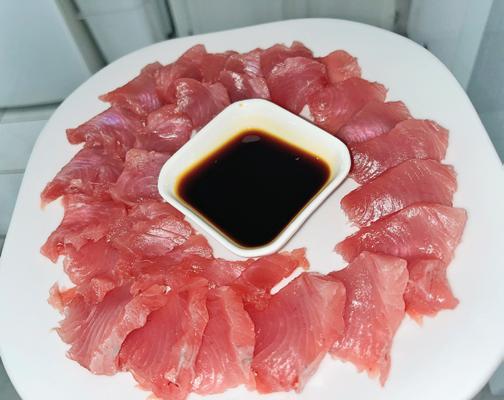
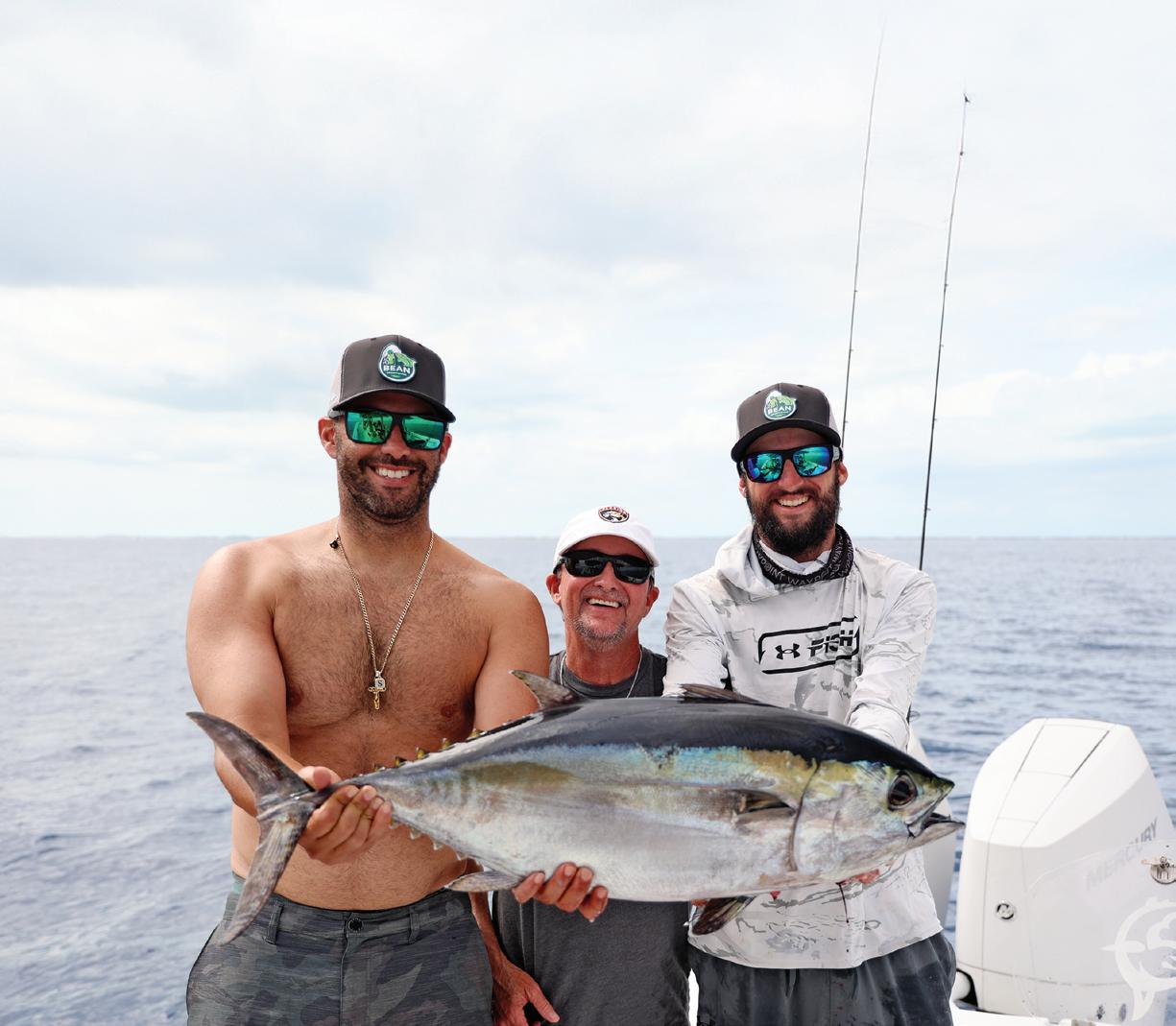

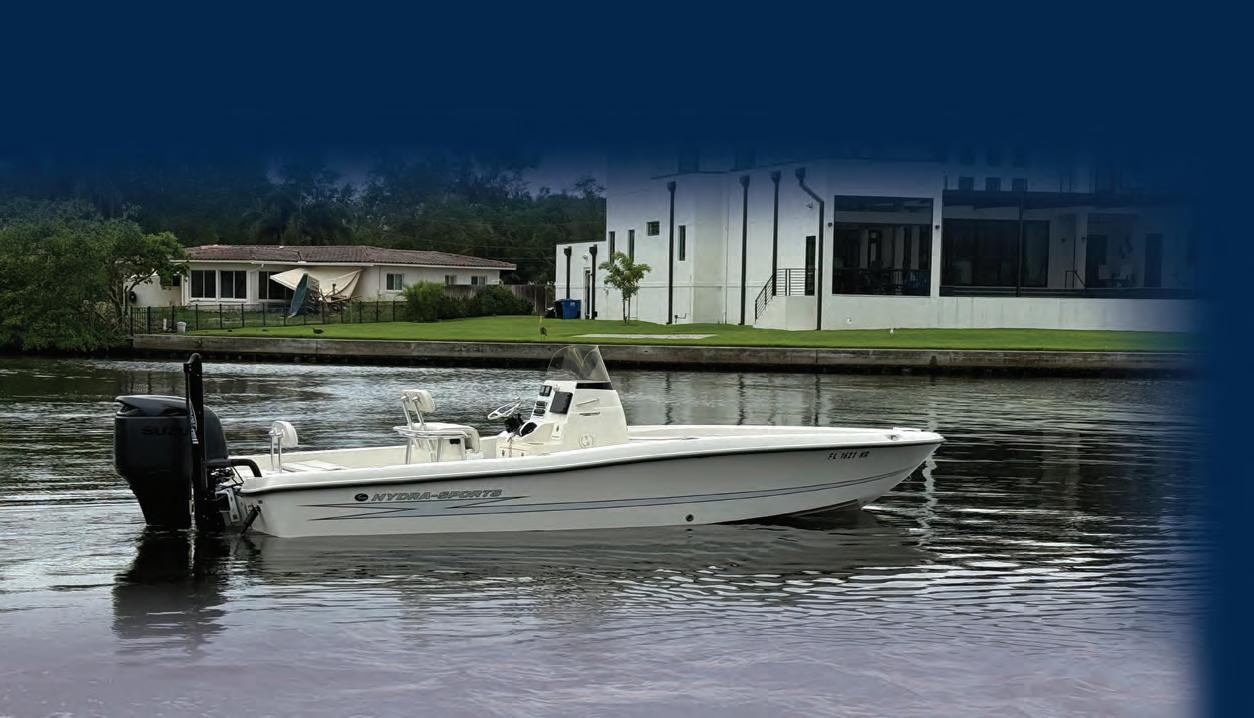

RePower Packages designed to best ft your needs and not stretch your
Financing
Rest assured, all Mastry Suzuki RePowers are backed by Suzuki’s industry leading 5-year factory


Stationed strategically around the East Coast, all Suzuki RePower Centers have achieved the highest level of Suzuki certifcations to meet and exceed your repower needs.
Stationed strategically around the East Coast, all Suzuki RePower Centers have achieved the highest level of Suzuki certifcations to meet and exceed your repower needs.
When Considering A Repower, Consider These Factors:
•Every Authorized Mastry Suzuki RePower Center has decades of repower experience providing proper rigging, controls, propeller matching and in water testing
•With a Mastry Suzuki RePower, owners gain improved performance, less noise and greater reliability
•Mastry Suzuki RePower’s exclusive Owner’s Edge Program*
•Mastry Suzuki RePower Centers use authentic Suzuki OEM parts and have factory certifed technicians

Since 2014, Mastry Engine Center, has been building the premiere Suzuki Outboard repower network in Florida. Today, Authorized Mastry Suzuki Outboard Centers have been exceeding expectaions in the Southeast for over two decades. Recently Suzuki Marine requested Mastry Engine Center to expand the network throughout the Northeast. Now boat owners from Maine to Florida can be assured of the best support for their Suzuki outboard repower project. All Authorized Mastry Suzuki RePower Centers provide the best options, information and package pricing for excellent performance in repower.
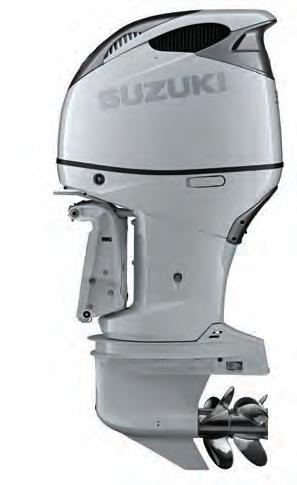





*Get with the Program!
When you purchase a new Suzuki outboard from an authorized Mastry RePower Center you qualify to become a member of the Mastry Suzuki Owner’s Edge. Owners receive an identifcation card that provides them with important information about their Suzuki outboard motor as well as a passport to additional benefts during ownership. Members enjoy a detailed engine maintenance schedule, Mastry Suzuki RePower Trade Program and special pricing from Mastry Suzuki Partners

By Capt. Michael Okruhlik
When the end of summer is near and the tides align, there’s no place I’d rather be than Southwest Florida—with a rod in hand and visions of giant snook dancing in my head. !is year, my buddies and I made the pilgrimage with a simple mission: land a personal best. Big sh only. No compromises.


If I had to pick just one, hard twitch baits take the top spot. !ere’s something about that sharp, erratic dart through the water that drives trout wild — and the strikes are violent. Like “wake-up-your-neighbors”, violent. Twitch it, pause it, twitch again — boom! Bonus: many of these lures rattle, which adds an extra layer of appeal in the slightly stained surf water.
When I want a front-row seat to the chaos, I tie on a topwater. Watching a speckled trout explode on a surface lure in the calm surf is pure adrenaline. If it misses, keep working it. Trout in the surf are red up and aggressive — they’ll o en come back for seconds (or thirds). Like the twitch baits, these lures rattle too, which helps draw sh in from a distance.
!e silver spoon has earned its place in Texas shing history, and for good
reason — it still at-out works. I prefer a steady retrieve style spoon for consistent action over a jigging one, but that’s just personal taste. And hey, I’m a paddle-tail guy at heart, so a steady retrieve comes naturally.
So plastics shine in the surf, but go for durability. !ese sh aren’t sitting around like they do in the bay — they’re moving, and fast. !e last thing you want is to waste time swapping lures er every catch.
I use paddle tails with built-in tail rattles and super-loud rattling shrimp. Yes, rattling shrimp exist — and when trout are keyed in on shrimp, nothing else will do. !e realism and noise can turn a slow day into a urry of action.
Live shrimp under a rattling popping cork? !at’s trout candy. It’s simple, e ective, and deadly on calm days.
But if the bite gets nicky, break out the big guns: live croaker. Controversial? Sure. E ective? Absolutely. When the water’s crystal clear and the trout are being picky, croaker can be a day-saver.
Don’t be surprised if a slot red — or even an oversized bruiser — crashes the party. Every lure and bait on this list will get crushed by reds in the surf. Be ready. !e surf might be calm, but your drag won’t be.
Calm surf days are perfect for family shing. Easy wading, plenty of action, and good-sized sh make it a blast for kids and adults alike.
One nal tip: if there’s any southwest wind at all, do what the surfers do on at days — stay in bed. It’ll save you some frustration.
So check that forecast, grab your favorite rattling lure, and remember: always take a kid shing.
Capt. Michael Okruhlik is the inventor of Knockin Tail Lures®, and the owner of www.MyCoastOutdoors.com.
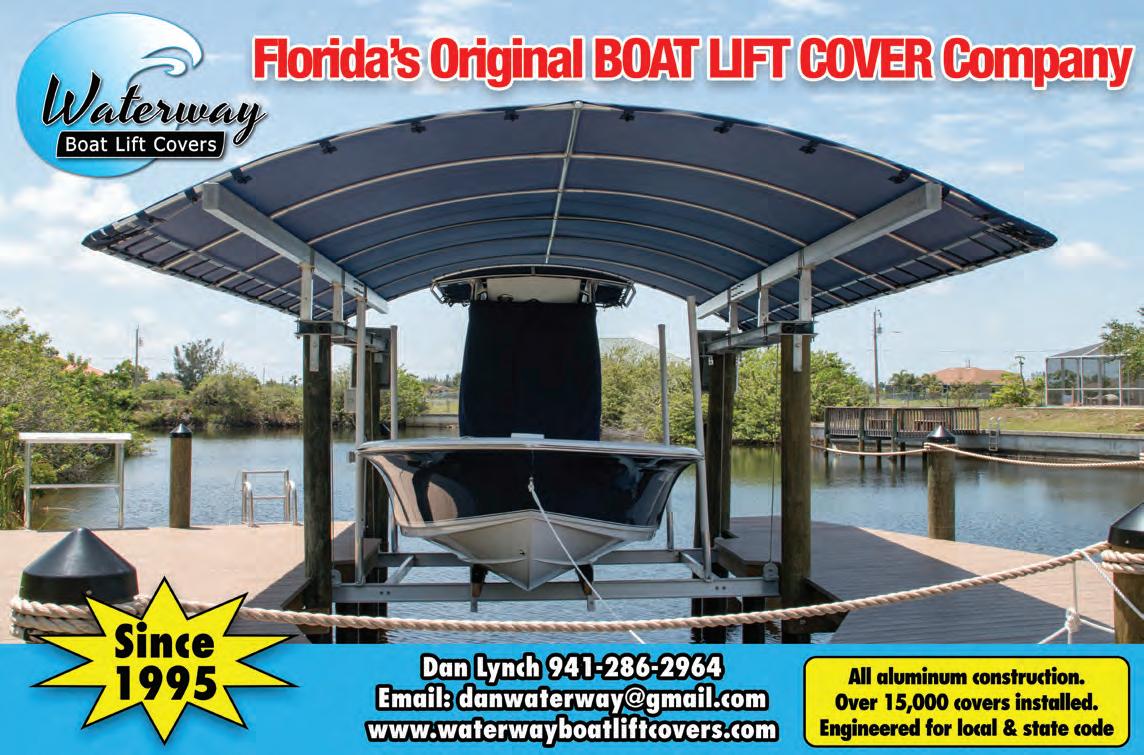

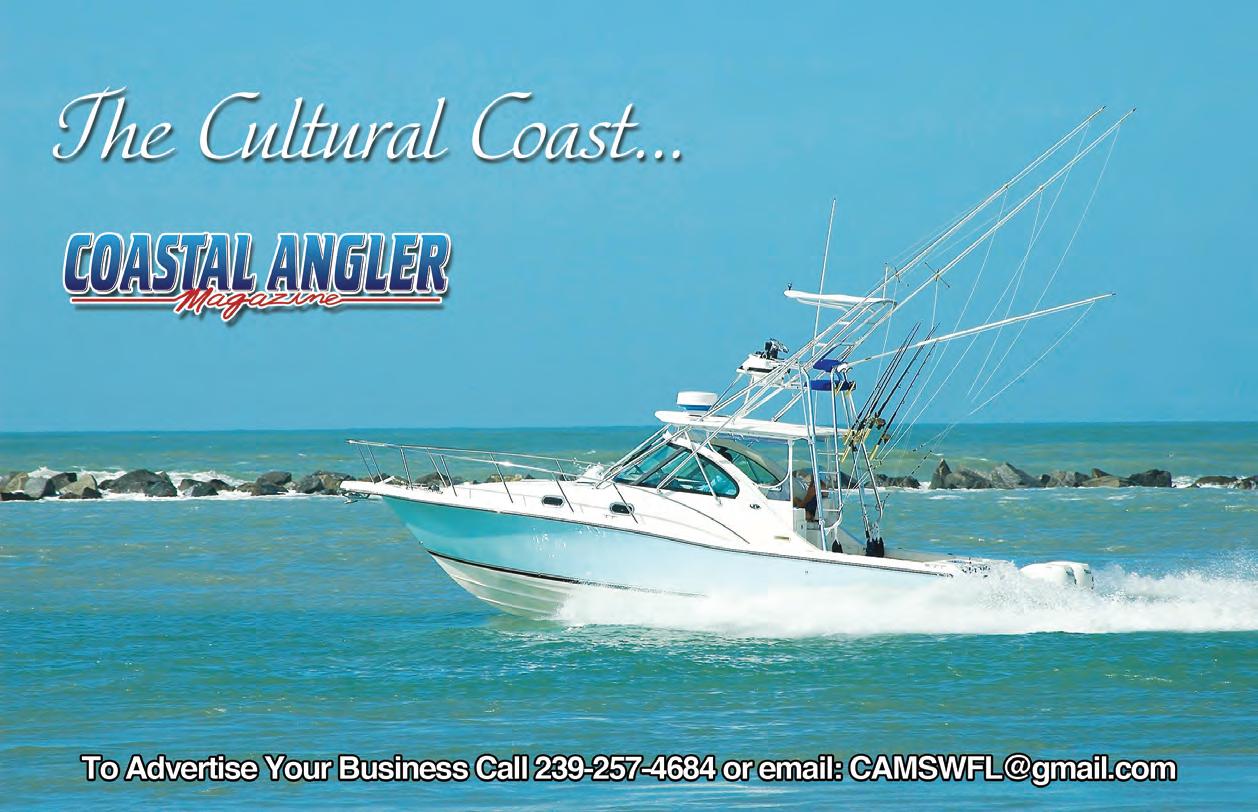
By: Jessica Hendrie

September is a special month for me! It’s my birthday month and you know what that means? Another excuse to go fishing! This year, we are going to set sail in the beautiful waters of Islamorada with a goal target of the one and only swordfish. Maybe I can get away with trying to get my first bonefish, too! I’ve caught swordfish before but they’ve all been small. Still, there’s no feeling like bringing one to the boat. I hope this is the year that I set a personal best swordfish catch. Have you ever been swordfishing? It’s not just your average day on the water. Most will get sick, get bored, you name it. But those who know, know! It’s a serious game of patience and the right gear, and a little bit of faith. From the rigging of baits with glow sticks to choosing the right reel that can handle the deep drop, the details matter. There’s something special about chasing swordfish. They’re not fast and flashy like a wahoo or sailfish. It’s
deep. It’s quiet. These fish dwell thousands of feet down and pulling one up from the dark is just a whole other level. One trip, I fought a swordfish for 2 hours, only for it to be too small to keep. Yeah, I know what you’re thinking. But I’m still getting to tell people about it so a win is a win. Back to my birthday, every September, I like to reflect on where I’m at in life and somehow, swordfishing has become part of that tradition. It’s like a gift to myself, a reminder to keep chasing the big ones, in the water and in life. One of the best parts about this tradition is sharing it with my family and friends. So, whether I land my goal sword or not this month, I know I’ll come back with something valuable. Maybe a new trick or story. or maybe just memories. But if I do, you’ll definitely hear about it next month. Happy Fishing!
By: Capt. Andrew Bennett

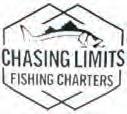
One of the many things that I love about being a charter captain is the way that I get to learn the subtle changes in the seasons and the way that fish respond to them. Typically, in September there are less anglers on the water because many vacationers are going back to school but the gag grouper fishing is just getting started.
Gag grouper are a gift from God. They are a valuable resource that provide anglers with a fantastic fighting, great tasting fish species to target. Because they are so precious, we must manage them carefully,
and the state of Florida has been changing the season dates in recent years to try and get it just right. Only a few short years ago the season was several months long, then was drastically reduced. At most of my fishing and diving spots I am seeing more gag grouper than ever before, which seems to indicate that the shortened season is not justified. This year; like last year, the gag grouper season opens for just 14 days beginning September first.
During last September’s grouper trips, I was able to get several of my anglers many pounds of beautiful grouper filets and fun filled memories of collecting them. Dropping a live pinfish over structure in Tampa Bay or in the Gulf, is an effective way to get a bite, but too often by the time that you know you are getting a bite, the fish is bringing your line into that structure and after a short struggle, the result is broken tackle, a free fish, and a frustrated angler. One way around this is to deep troll jigs or lipped plugs near that same structure. In order to strike the lure, a grouper must swim up and away from the rocks, and when they take the bait, the momentum of the boat can set the hook and pull the fish into open water where they can be fought with little chance of cutting the line. Even in open water, a gag grouper will put up a tremendous fight that is fun to watch and even more fun to experience. Many anglers agree that, pound for pound, a gag grouper is one of the hardest fighting fish in our area. Another advantage of this method is that fishing from a moving boat can be more comfortable than sitting still at anchor in the September heat.
This year for the first time, any undersized, or over the limit gag grouper that I release from my boat will be tagged. I have been given tags from FWC to attach to any gag groper that I catch and release. I will report the size and location of each grouper that I tag. The tags have a unique identification number and contact information for FWC. If they are caught a second time, their location and size can be reported and that data will help the State make good decisions regarding the future rules for gag grouper to ensure their continued abundance.


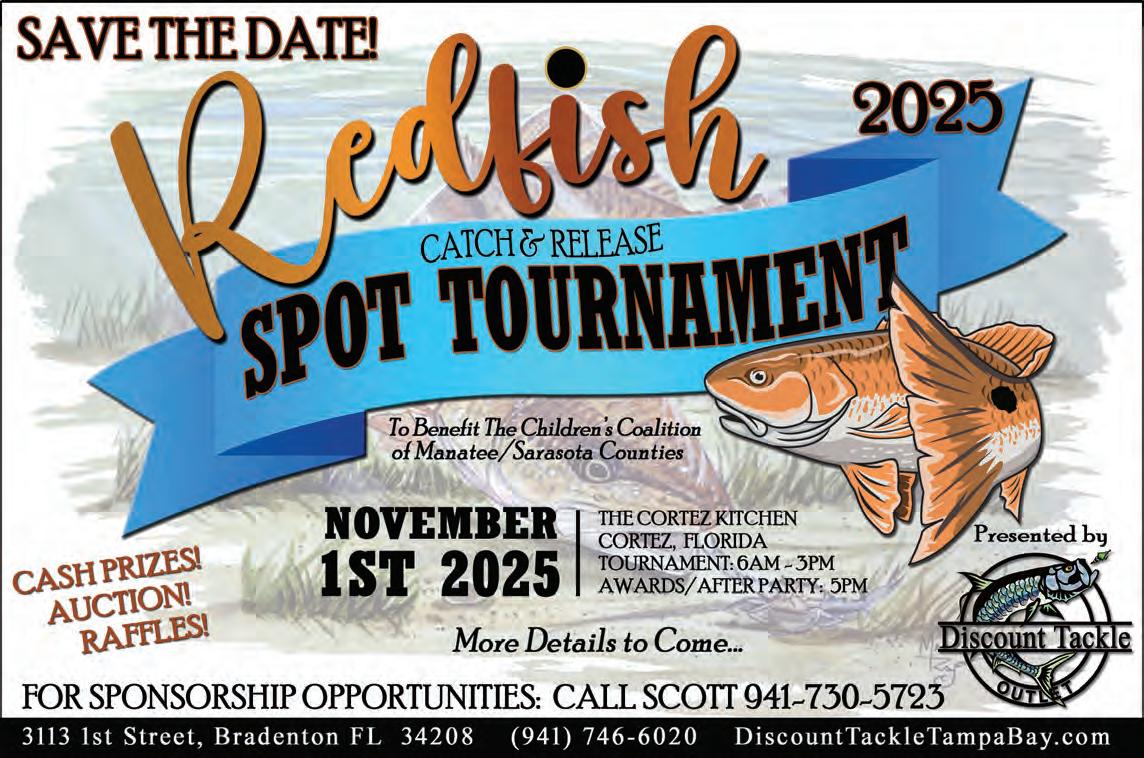


By: Caitlyn Gatrell
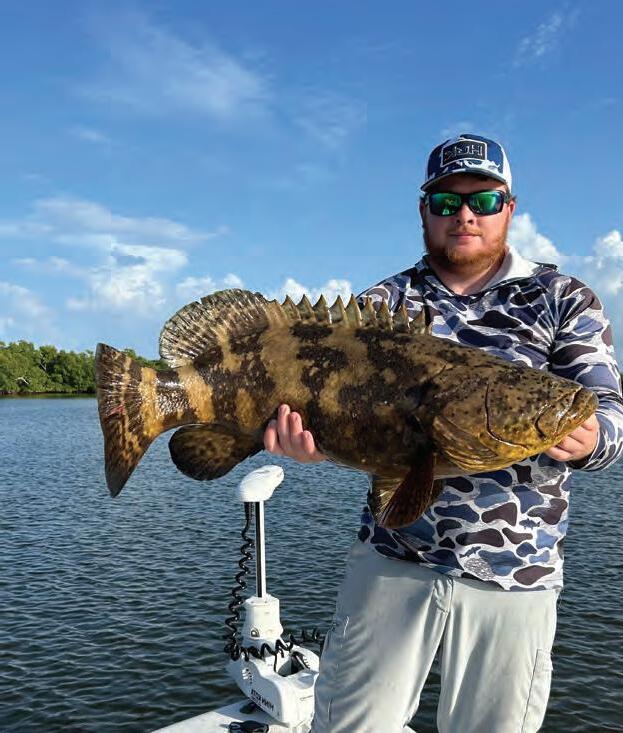
In the mangroves tucked in the backwaters, there are quite a few species lingering around. There are schools of bait fish flickering around the mangrove lines, groups of snapper and jacks frolicking between the underwater branches, and larger predators like snook and redfish hanging around the shady structures. But there’s one species that you can commonly find here that puts on a different type of fight: The Goliath Grouper.
Goliath are one of the almost 160 Grouper species to exist across the globe. Not to mention they are among the strongest marine creatures out there, even the little guys. You can find goliath grouper in various oceans and countries, but Southwest Florida holds plenty of them, and the mangroves are amongst their favorite spots to hang out. We hook up to them almost every time we head out there, whether it’s one of our honey holes or a new spot we are just trying out. They are definitely very abundant down here.
We typically fish close to the mangroves, looking for pockets, fallen branches or submerged trees, and any surface activity. Goliath like to tuck themselves in anywhere they can get into and cover as well as a chance to ambush bait. You’ll want to cast as close as possible to the structure, just be careful! Sometimes they strike on bait and then immediately get back into their holes. From there it’s almost impossible to get them out.
We toss out live or dead baits like mullet, shrimp, pilchards, ladyfish and sometimes even lures if we’re running low on bait. When they hit, you’ll know. It’s not a nibble, it’s a full-on strike, like your line just got thumped hard. Once they’re hooked, the battle begins. They’ll run, trash, and do everything they can to fight back and make their way to their holes again. Once you feel the thump, you have a few seconds to get a hold on them or they’ll be back in there in a hurry.
It’s all about max drag and muscle. Basically, you want to rip them up and out quickly, but it’s a balance. If you crank on them too hard, you’ll snap your line or rip the hook. Just use your best judgement when you hook up to one. You’ll be able to feel the line and can get a feel for their location and movement as you battle against them.
Fighting these beasts of the mangroves is unpredictable, challenging, and downright addicting. Every hookup feels like a test of your gear, your skills, and your patience. Whether you pull a good one out or get broken off, you walk away with shaky hands, a racing heart, and a story worth telling. It’s an exciting battle, no matter the size you catch. And let me tell you, if you hook up to a large one you are in for a real treat!
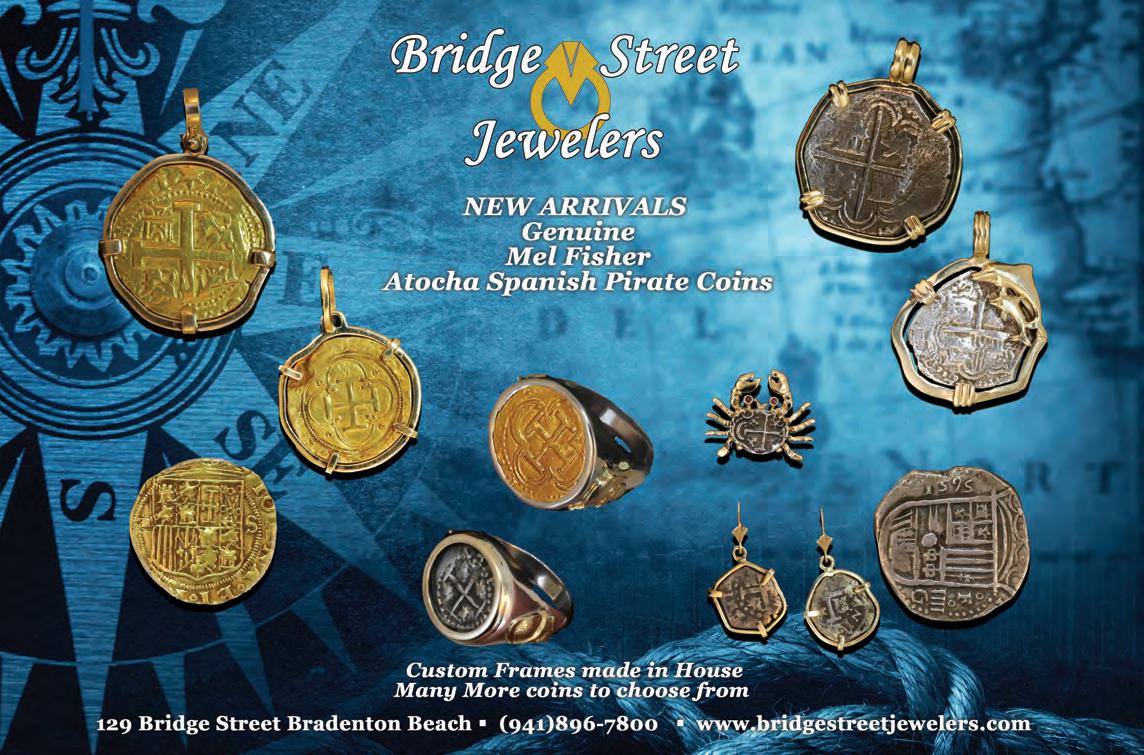









By: Joe Sheaffer

On a recent fishing trip, I hooked into a very nice snook. This snook was very close to the structure along a stretch of mangroves and surged towards cover, and I knew I couldn’t stop her from getting into the mangroves. My first thought was to try and stop her momentum using my fishing rod, basically trying to horse the fish from getting into the structure. Our natural reflexes and instincts tell us to pull and their instincts are to resist and swim for cover. When fish are hooked around these areas they definitely have the advantage and based on my experiences, I chose another strategy. Opening the bail on my spinning reel would take the pressure off the fish and by taking pressure off the fish, many times they will just stop resisting and basically just stop in their tracks. Other anglers have explained to me, when the fish is getting the best of you, open the bail, take pressure
off the fish and they’ll stop resisting. The belief that when a fish is hooked, it probably feels like they have eaten a bait fish, they really don’t think much about it until they feel pressure. It has taken me a while to give this technique a try and it has definitely helped me land a few more fish. Will it work every time, no, but it has worked quite a few times. After I opened my bail I was able to get my boat in a better position to deal with this fish. I started reeling very slowly and the snook started to come towards me. If I felt the fish resisting, I stopped reeling. I finally was able to guide the fish away from the cover and land it. Again, this won’t work every time but it is a good strategy to know, helping us to land a few more nice fish. Strategies that can help us not to break off a big fish, by leaving a hook in their mouth is a good deal. As always, enjoy your fishing days and keep casting.






Captiva Island (outside), FL - Sep 2025
1
2
3
4
7
19
25
































































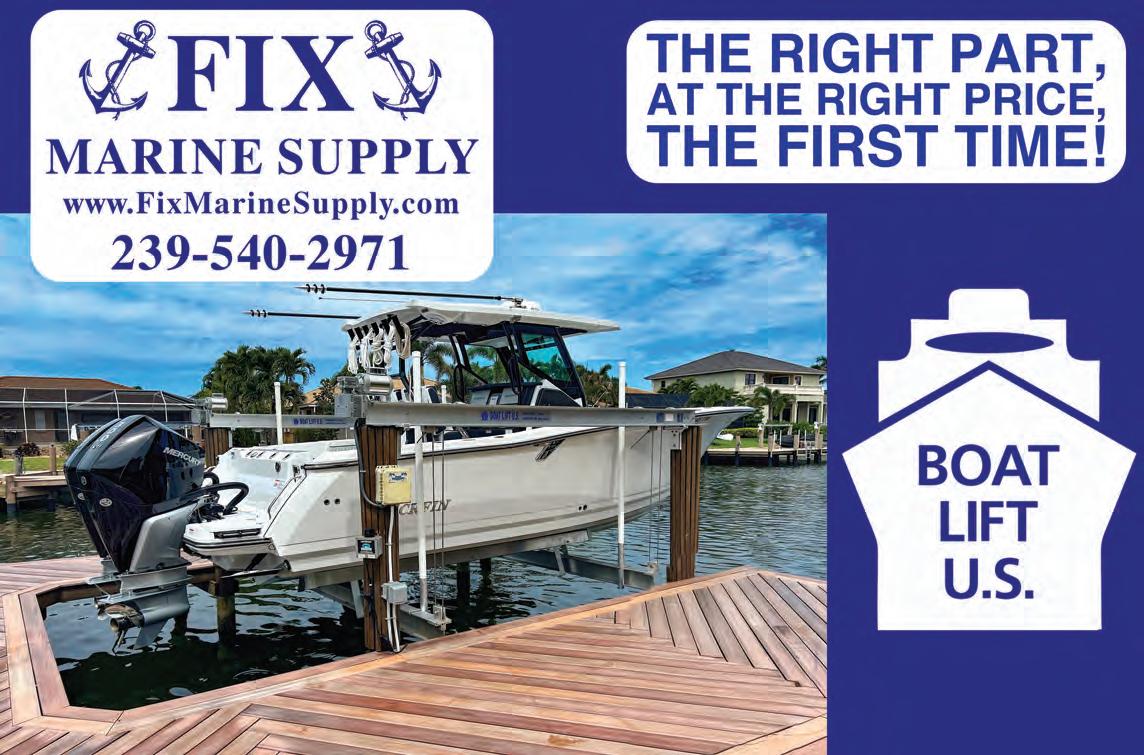
9
7
6
2
1






















































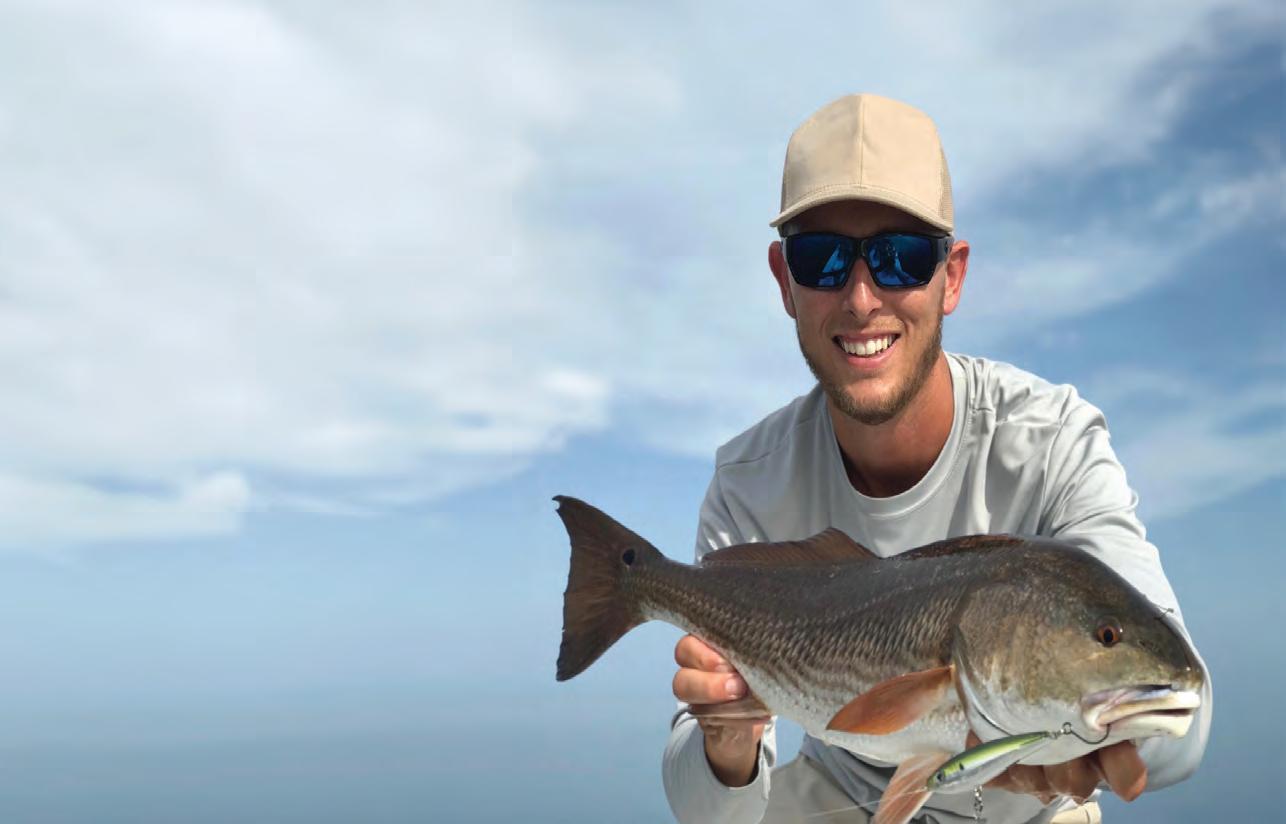

By: Capt. Tim Ramsey
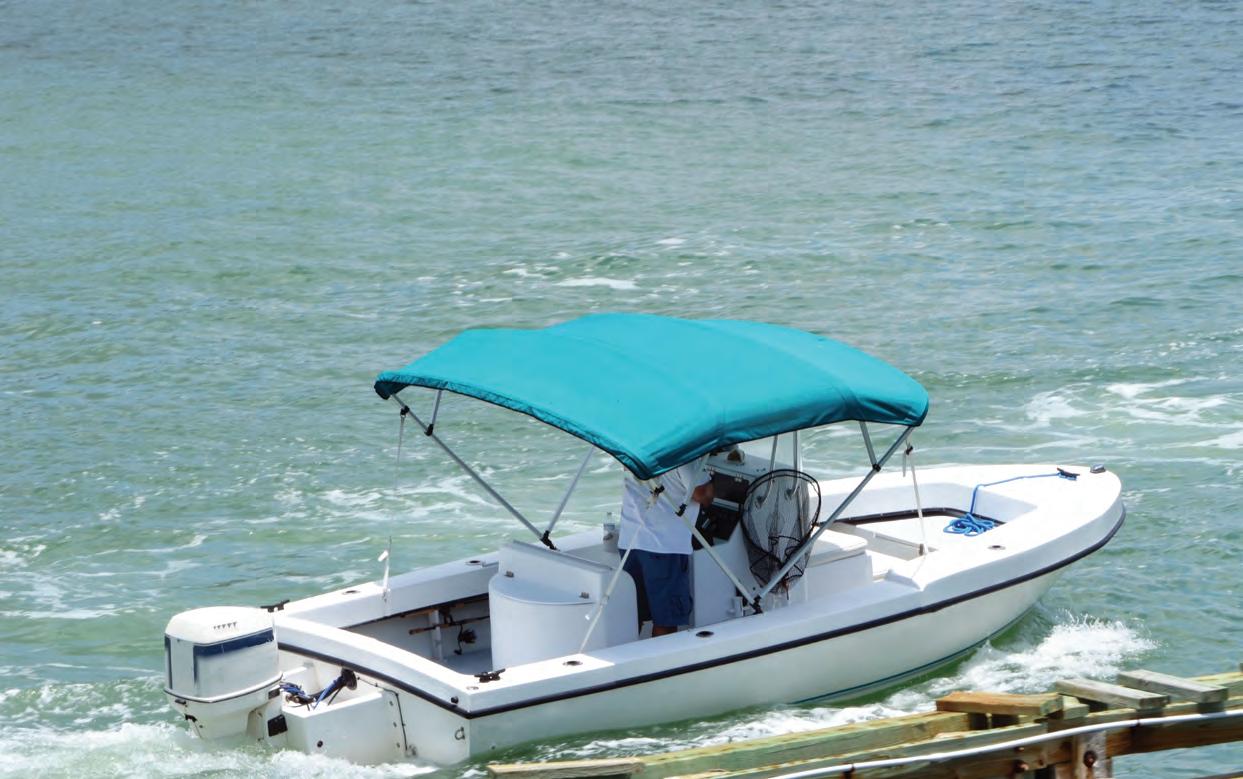
Years ago, I was fishing for snook with my wife (the first lady of fishing) on the gulf side of Cape Romano. As I rounded the entrance to Blind Pass, the bright green braided line from a fisherman who was doing a lame attempt at fishing the point wrapped around my prop and stopped my engine. By the time I cut the line and got the boat turned around it washed up on the northern sandbar.
B eing a small flats boat, a 17 Hewes Tailfisher, I jumped out and went to the stern. I pushed the boat off the sandbar toward the horizon. As I did, the bow lifted over a couple boat wakes breaking on the bar and fell back down with a splat. When I decided I was far enough out to drop the trolling motor, I hopped onto the stern deck, ran up the gunwale to the bow, deployed the motor, and hit the rabbit button on the remote control. Unfortunately, as I did that, the boat went back toward the beach. I ran back, hopped back out, pushed the boat by the poling platform and tried to get into deeper water.
A s the boat lifted over another swell, a horrifying sight caught my eye. There was a blood trail from the stern, all the way up the port gunwale to the bow. Startled, I felt the trolling motor successfully pulling the boat away from the ground and I hopped back aboard. That’s when I felt a stinging sensation on my left shin. I looked down and saw blood gushing from a gash on my leg.
It turns out that as I pushed the boat from the stern, when the boat lifted on a swell and slapped back down, the port trim tab struck my shin and cut me. Fortunately, always level-headed, my wife rinsed her hand with the water bottle she held, then slapped her palm against the gushing wound.
“Wow, that’s a big cut,” she said. I stood there gobsmacked by her reaction. It was weird. Even though we were married and had no communicable diseases, I was somehow amazed she was so willing to get my blood on her hands. Silly me. Minutes later, I pulled out the first aid kit and treated the wound as pinkish water washed around the deck and went down the drain. A tube of antibiotic cream, four butterfly stitches and an ice pack later and all was good. Did I go in and head to the clinic? No. We fished on. Lesson learned? Stuff happens. Have a good first aid kit.
Now the boat is a 22 Skeeter I’ve had since 2015. Aft of the big bow platform is a deck in front of the center console. In that deck is a wet locker covered by a heavy hatch cover.
Recently, I was at the car wash using the outside station to rinse off the boat. Standing on the bow using the spray wand on the “soap” setting, I concentrated on the seams between deck hatches, then sprayed into the wet locker. Then, stepping down from the deck I stepped down from a thousand times, my right foot landed on the non-skid portion of the deck in front of the wet locker. Then, my foot slipped, shot into the wet locker, and down I went. My upper body flew down and sideways, the side of my right shin hit the bottom of the open deck lid with a painful scrape, my foot reached the bottom of the locker, a bolt of lightning from my twisting right knee went up my leg as my butt landed on the edge of the front deck. Miraculously, having put my Bimini top up to get it out of the way, the forward strap stopped my progress toward the stern. It probably saved my knee.
I s at for a moment, left foot on the front deck, right foot inside the well, legs spread wide, right knee twisted in a bad way, back against the port gunwale. I wondered if I just hurt my good knee, the other damaged after years of army service and a fall a few years ago. I dislodged my right foot and pulled it over to the middle of the wet locker, straightening my knee. The pain went away. I pulled my left foot off the taller upper deck and set it in the wet locker next to my other foot, then sat up. Then, the only thought that came to me was “what a dumbass.” I was amazed I wasn’t hurt worse. I wondered how I missed hitting my tailbone. I thanked the Bimini top for saving my spine. Then oddly, I thought about how much money I was wasting running the car wash as I sat like a nitwit collecting myself. Then I remembered, stuff happens.
My point in these two stories is that yes, stuff happens. Be ready for it. Have a good first aid kit that includes antibiotic ointments, pain relievers, motion sickness medication, ice packs, and pads for large wounds. You never know. Also, be aware of the places on your boat that don’t have a non-skid surface. Be prepared to call for help. Never release the front clip on your boat on the trailer until you’re sure it will go in the water if it comes off instead of landing on the ramp. Know where you are and be prepared to run aground. Wear your sunscreen. Make sure others wear it. Take it easy on the alcohol. Hydrate. Be careful crossing boat wakes. Remember, stuff happens. See you out there.

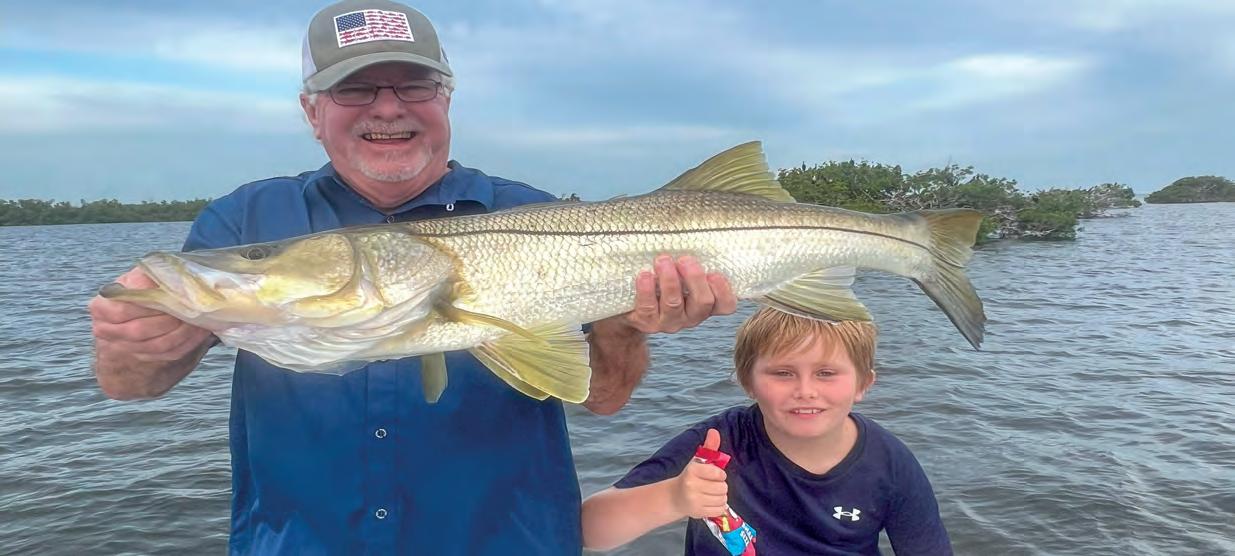

We managed to make it to September, with the past months being hot. Charlotte Harbor has a lot of good things going on and we should start seeing our redfish fishery pick up. In the fall, months large schools of fish begin to move in the harbor from the gulf. These schools can often be found on local bars, and along mangrove shorelines. When locating fish in open water, I look for large schools of mullet. As mullet feed on the algae, they stir up the prey that reds like to feed on. Things such as small shrimp, crabs and baitfish. Another fishery that begins to heat up is the snook fishing. The main reason for this is the spawn is over, and winter preparations begin. I know it's crazy to think about winter, but a solid fat reserve is a life-or-death deal for these fish, therefore, a large number of fish will still be on the flats and shallow mangrove islands. However, a large portion of fish will be moving closer to deep water access. Areas like the local canals will
By: Capt. Dave Stephens
start having numbers of fish moving in. I like fishing around old docks, and round deeper creeks or flats that have deep water access. Although September is not considered a month for tarpon it can still be very productive. We have large schools of fish in the harbor this time of year and ladyfish will be chasing glass minnows all over the harbor. Many times, I have found large tarpon feeding on ladyfish in these situations. I recommend keeping a larger rod on the boat just in case. The fall can be a very exciting time to fish in Southwest Florida, and the most difficult decision to make can be what to fish for! Remember it's still storm season so keep your eye on the sky, as storms can roll in very quickly. If you would like to experience some of Southwest Florida’s finest fishing give us a call or send an email. All of our charters are private and customized to fit you and your party’s needs.






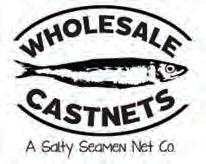

By: Capt. Bart Marx
Being able to go offshore for snapper this month with decisively depend on the weather. On some of the deeper reefs you will be able to find yellow tail snapper. They usually like structures that have lots of relief, and it is best to anchor up current of the structure
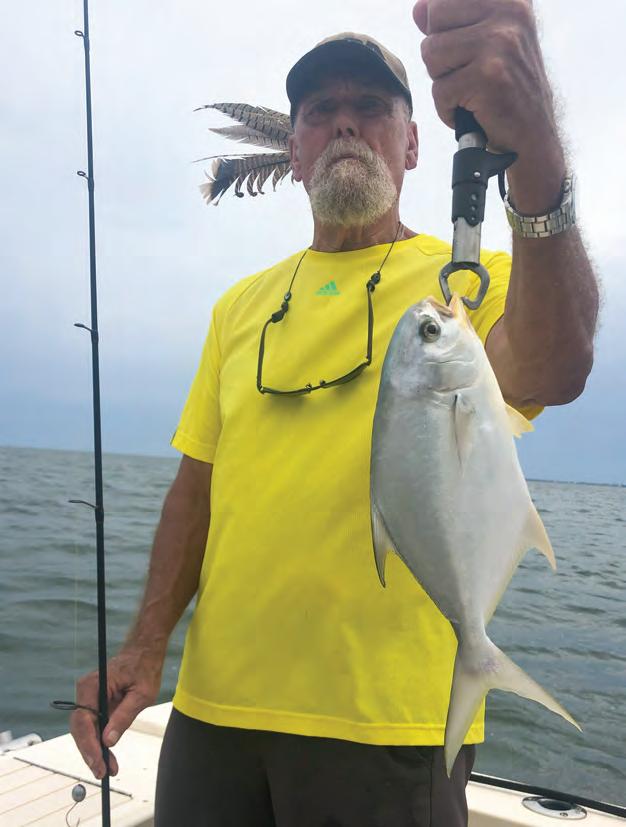

and chum the snapper to you away from the structure. These types of structures are also loaded with goliath grouper and the challenge is to get your catch to the boat before they grab it and head back into the structure. Then there is a good chance there may be sharks and barracudas that will steal half of your catch, making it rewarding if you get them into the boat whole. If the “taxman” stays too persistent where you are fishing, it’s probably time to move to another area. If you move to some natural bottom in 60+ feet of water you can find a spot that will have some lane snapper, which are great table fare. Check the FWC regulations for the amberjack/reef donkey as they are lots of fun and are great for smoked fish dip. If you use fish rules they have the Federal regulations for the species that you can harvest when you go out past 12 miles in to Federal waters. Nearshore along the coast, you may find some schools of the bull reds the breeding stock and they are usually over the 27" limit. The big reds can also be found just inshore on the grass beds where there are plenty of finfish for a hearty meal. They come to fatten up to go offshore to spawn in deeper waters, and you may also find a cobia cruising the edges of the sandbar looking for food. This also is a great month to catch your Grand Slam; snook, red, trout, and a tarpon to complete your Grand Slam! As the waters start to cool down there should be pompano coming inshore as they like to skip behind you boat. If you see this, turn around and cast a jig to the area where you saw them skip or if you have a shrimp try one under a bobber. If you are interested in coming along with Capt. Bart Marx to see how we get it done, call me at 941-979-6517 or e-mail me captbart@ alphaomegacharters.com I also do training sessions where you hire me to come on your boat and teach you where you can take your boat and show you how to use some of the tackle and rods you already have for inshore or offshore fishing. The holidays are just around the corner and we offer gift certificates for people you may know that would like to experience fishing in Southwest Florida!

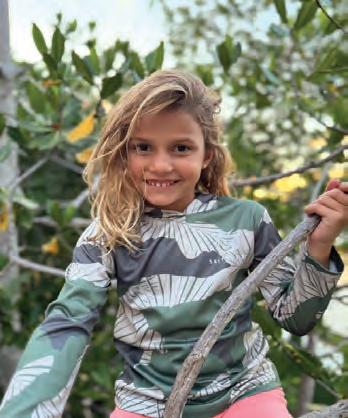












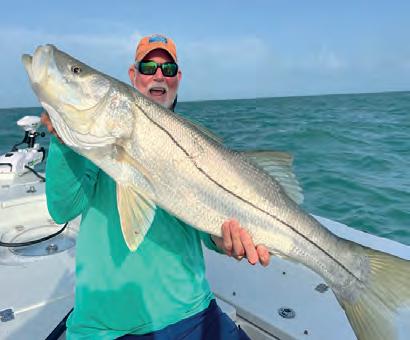
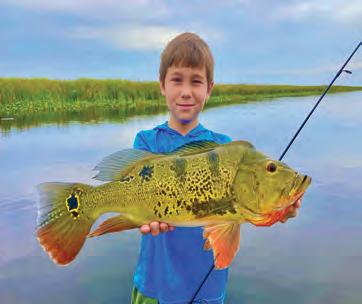
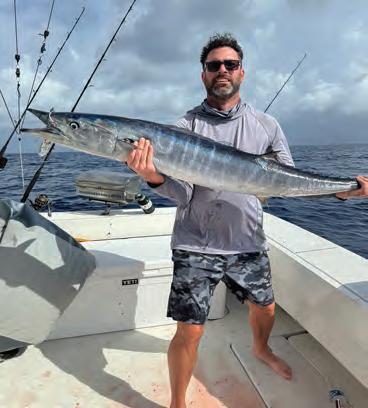
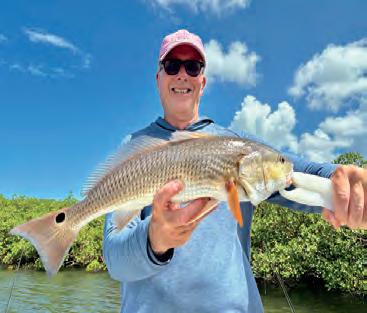
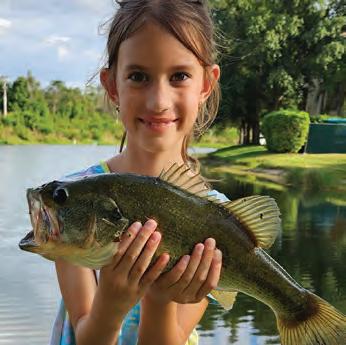

It’s no fsh tale when you run with a John Deere. You can get everything done faster and easier, so you get more time on the water. Plus, our special offers make them the catch of the day.



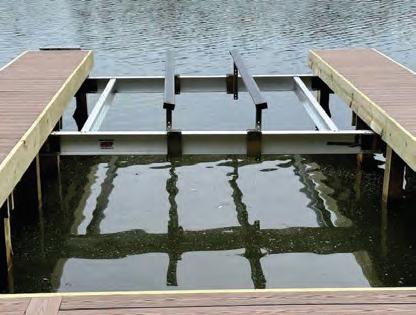
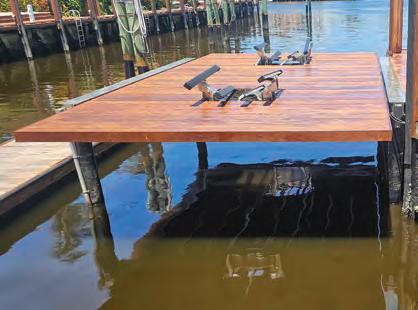
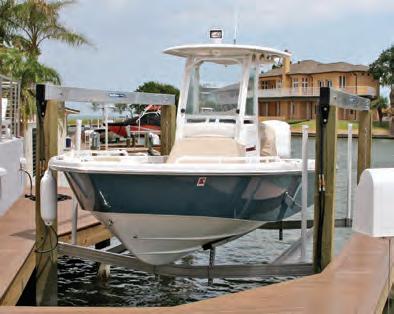


ShoreStation hydraulic boat lifts are a reliable choice for coastal residents and boating enthusiasts alike. Their strong construction, made with corrosion-resistant materials, allows them to withstand harsh environmental conditions, including sun, storms, and saltwater damage. ShoreStation provides a steadfast solution for protecting waterfront investments, o ering peace of mind to owners in the Sunshine State.
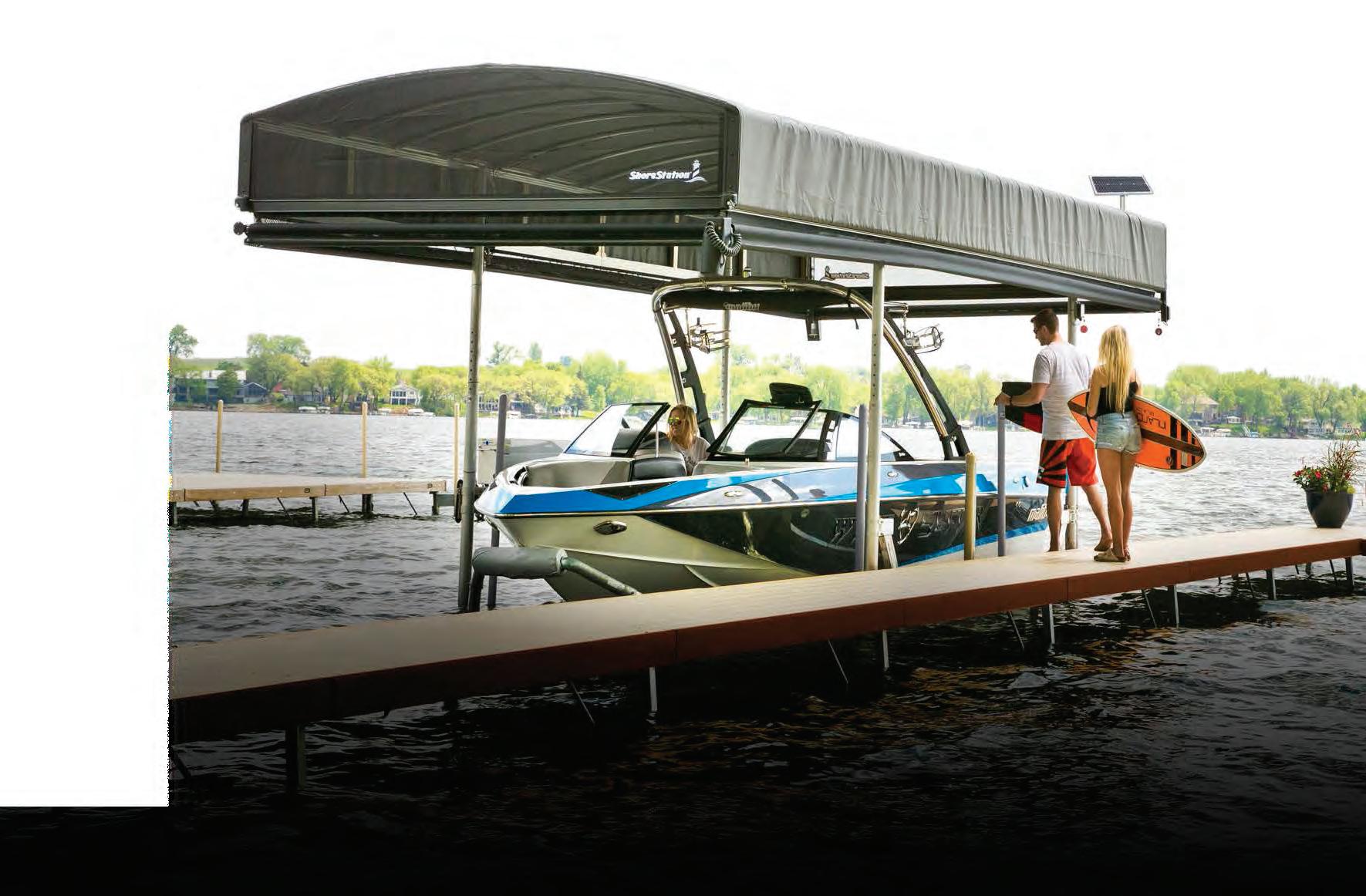

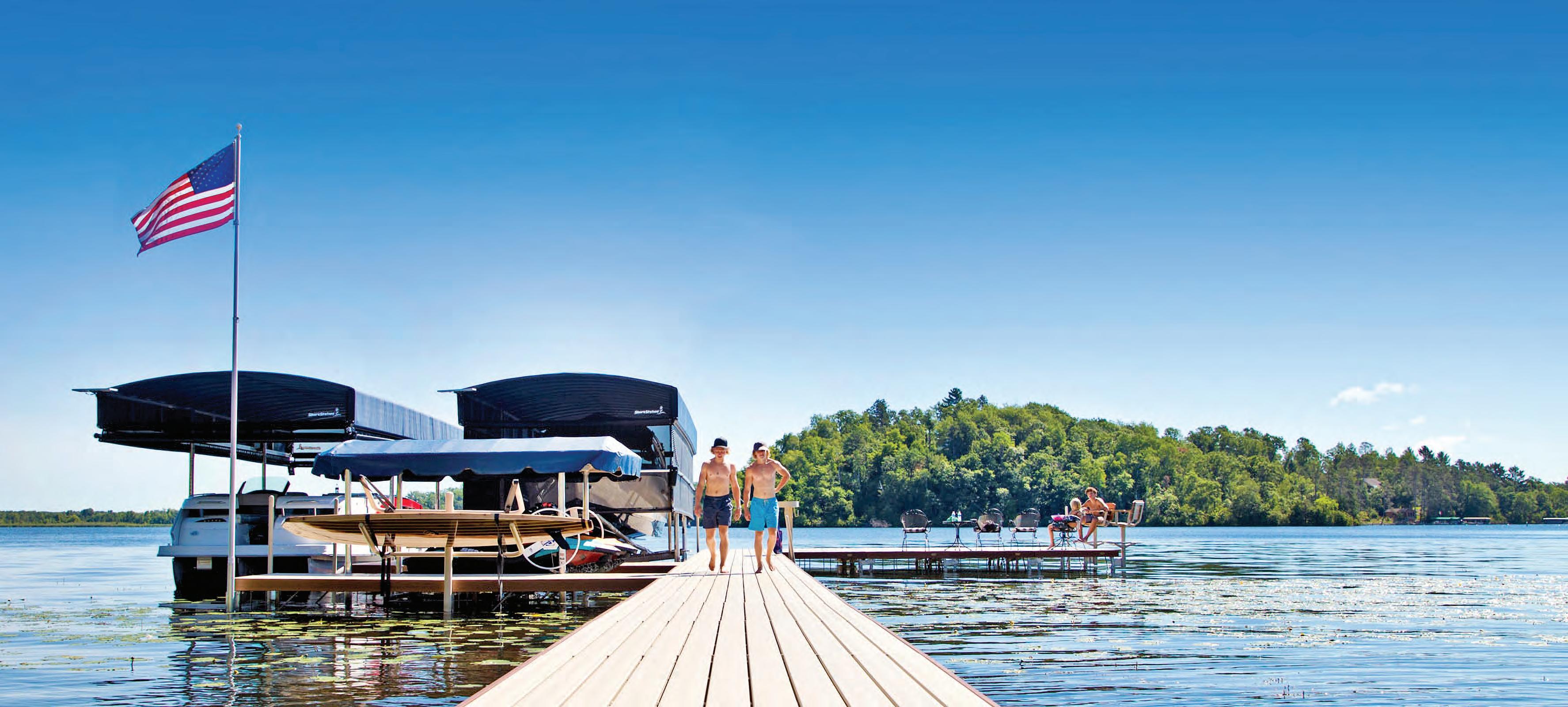


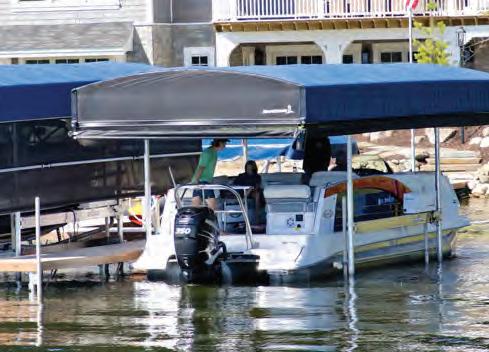
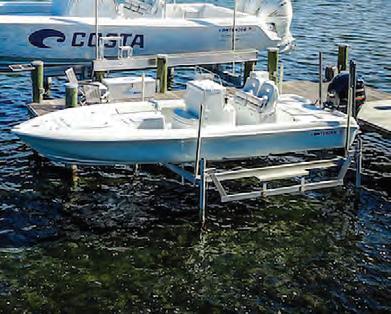
Equipped with exceptional weather resistant fabric and breathable SunTex 80 woven mesh ends for maximum protection and durability,

Made from the highest quality materials, our innovative hydraulic boat lift is one of the fastest and safest lifts on the market today. When you have a hydraulic lift, there’s no need to worry about wind and waves getting in your way. This lift will give you con dence to safely land and secure your boat in less-than-ideal conditions.
Never miss another moment on the water. Power your lift with clean, free solar power. Our speedy 20 watt charger features solar regulator drainage protection, saving your battery from permanent damage caused by overcharging.



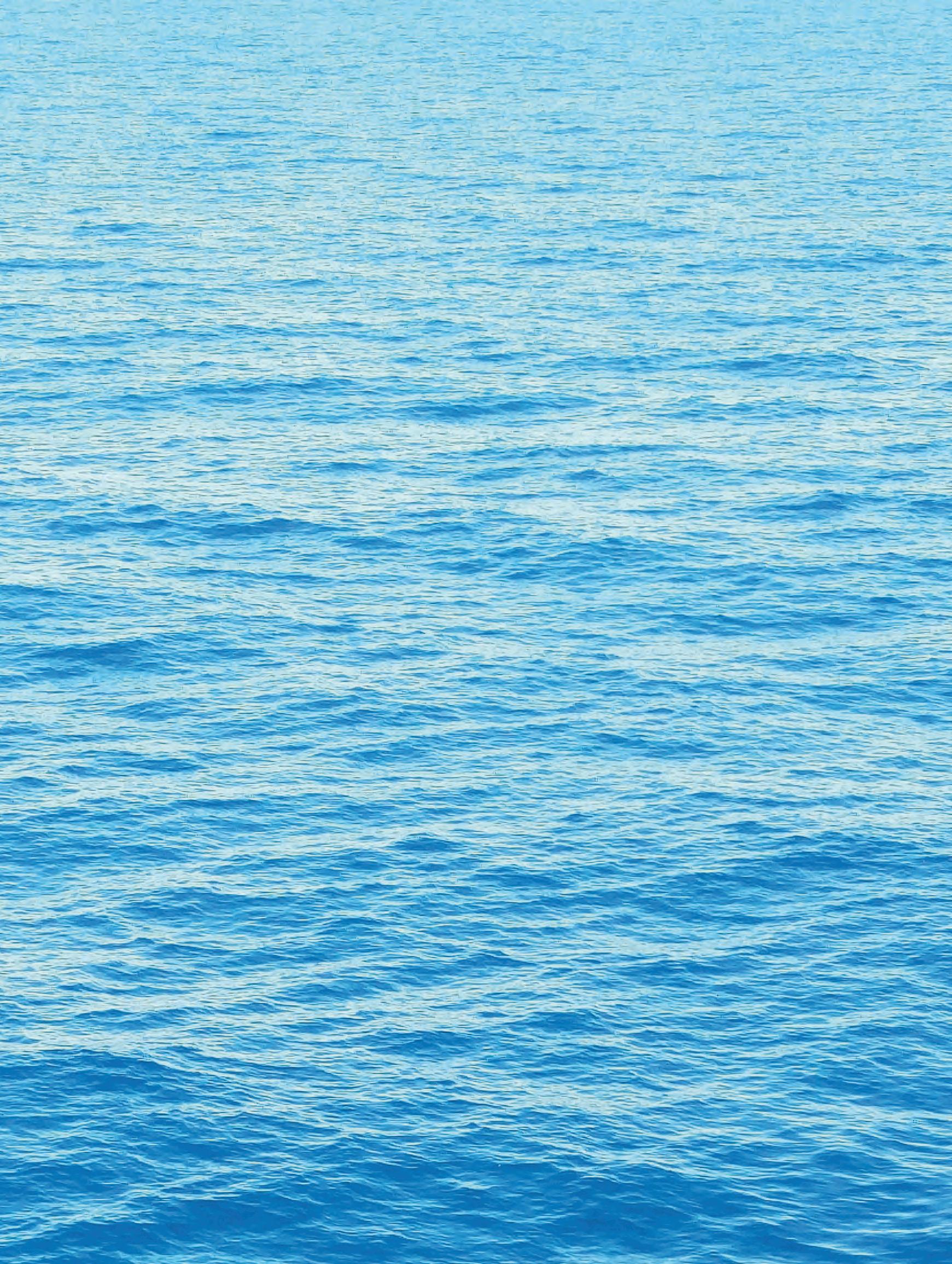


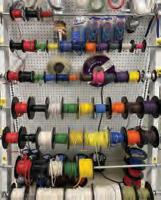

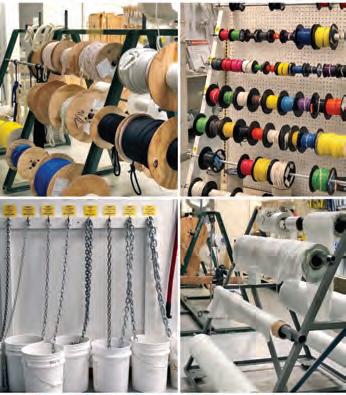






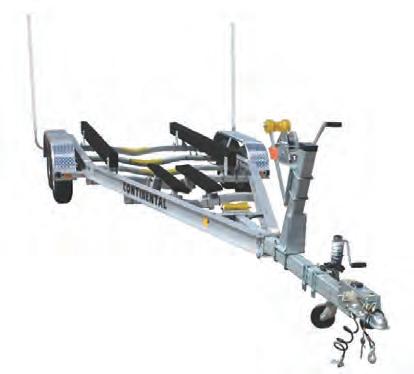











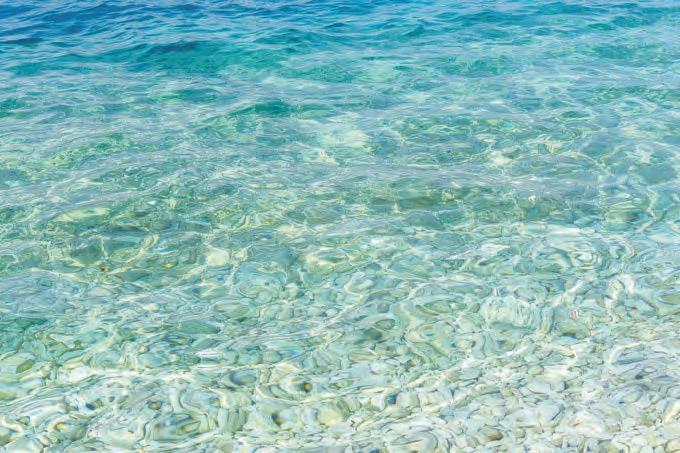





An angler from the Midwest recently had a !shing experience to remember along the banks of the Missouri River near St. Louis.
Wally Klein hooked an enormous 86.8-pound blue cat!sh—an incredible catch that tested both his !shing technique and physical strength.

Using gizzard shad as bait and a standard rod-and-reel setup, Klein fought the powerful !sh before !nally bringing it ashore near Washington, Missouri, according to the Missouri Department of Conservation (MDC).
A er snapping a quick photo to commemorate his achievement, Klein released the massive cat!sh back into the river unharmed.
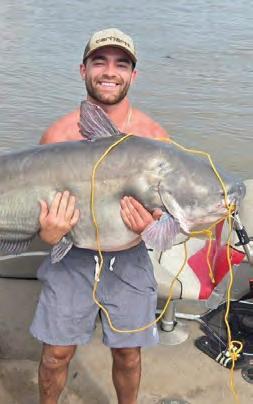
Klein told MDC o cials it was the largest !sh he’s ever caught. e department congratulated him on the impressive feat, saying, “Congrats on this impressive !sh.”
e Missouri River is a well-known destination for trophy cat!sh, particularly blue cat!sh, which are prized for their size and their spirited !ghts—making them a favorite and true challenge among seasoned anglers.
Klein’s cat!sh was a monster, but it didn’t quite break the state record — which was also set in the Missouri River. Back in 2010, Greg Bernal landed a 130-pound blue cat!sh, a catch that was a world record at the time.
Want to learn more about cat shing Missouri’s big rivers?
Visit: https://mdc.mo.gov/ shing/species/cat sh/big-river-cat shing.

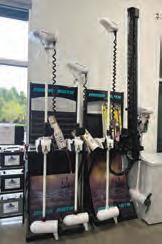

Capt. Mike Smith

The common snook, a.k.a. linesider, a.k.a. robalo, is one of the most sought a er game!sh in Florida waters. Sportsmen and women from all over the world come to Florida to catch these hard !ghting, jumping, head shaking, drag pulling !sh.
Snook will de!nitely eat top water lures, jigs, jerkbaits, wake baits, suspending hard baits, spoons, and ies but they love arti!cial shrimp.
Arti!cial shrimp will catch snook all year long; day or night; salt or fresh water; in every ecosystem, anywhere that snook live.
One of the best ways to catch snook with arti!cial shrimp is skipping them under and around structures like mangrove branches, docks, sea walls, sand bars and oyster bars. Pitch the shrimp to the structure and let it sink. en give it a twitch, twitch and let it sink again, then twitch, twitch and repeat the process until your arms get tired of reeling in linesiders..
Snook like a slower retrieve in the cooler months. Make sure to slow it down when the water temperatures approach the 70 degree level or less. A faster retrieve works better when water temperatures are between 75 and 85 degrees. Snook o en stop biting when water temperatures get above 90 degrees.
Another great characteristic of the arti!cial shrimp is that it skips like a dream. e 3 inch shrimp is the go to arti!cial shrimp lure for most hardcore snook !shermen. However, there are days when the snook are more discerning and a 2.75 inch or a larger 4 inch shrimp is the better size and pro!le choice.
e best color choices for shrimp lures are transparent, natural colors with gold or silver glitter in them for sunny days and clear water scenarios. More opaque and darker colors work better in dirty water and on cloudy days.
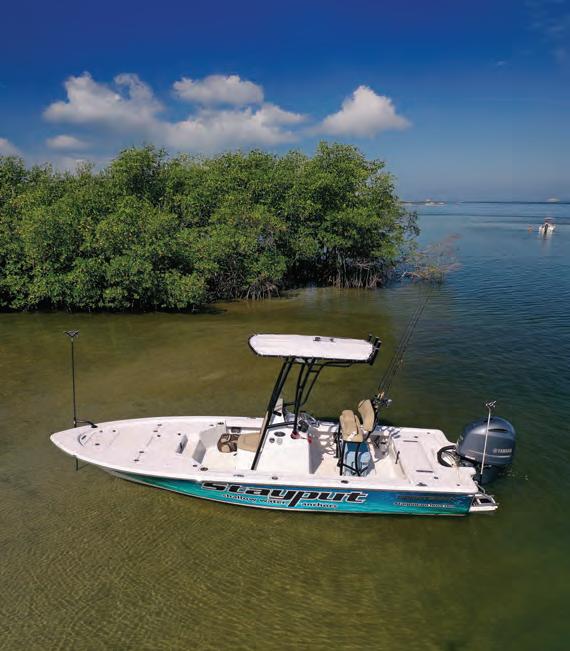
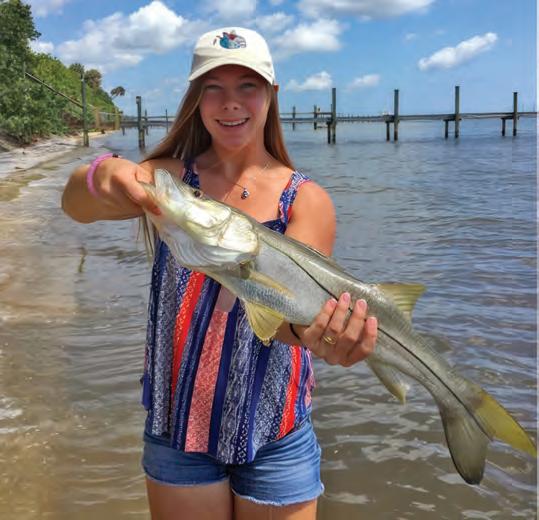
Many !shermen struggle when !shing arti!cial lures into tight cover scenarios. Sometimes, it takes about 50 casts and the loss of a half dozen shrimp lures to perfect the technique. But it is de!nitely a skill that any serious snook !sherman needs to master.
Capt. Mike Smith, owner of Fish Your Ass O Charters, is an inshore shing guide who has been shing the inshore waters, oyster bars and grass ats of Florida for more than 40 years. Reach him at (561) 339-2317, email: contact@ shyourasso .com or visit shyourasso .com.


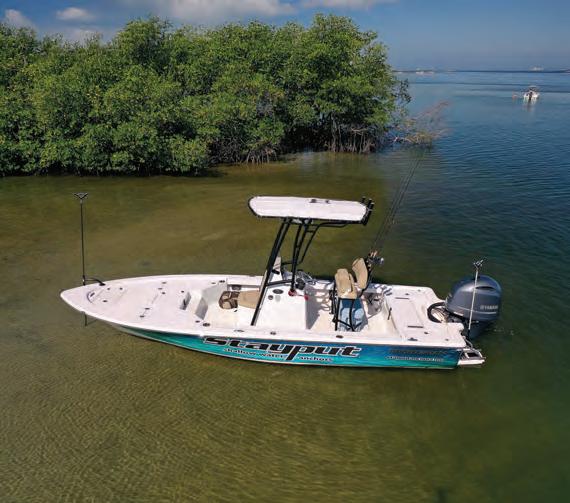

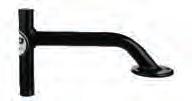



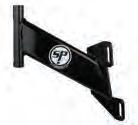



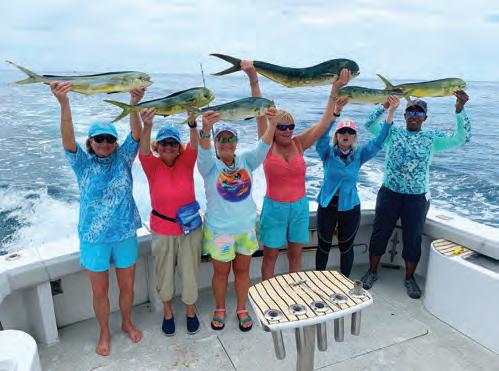

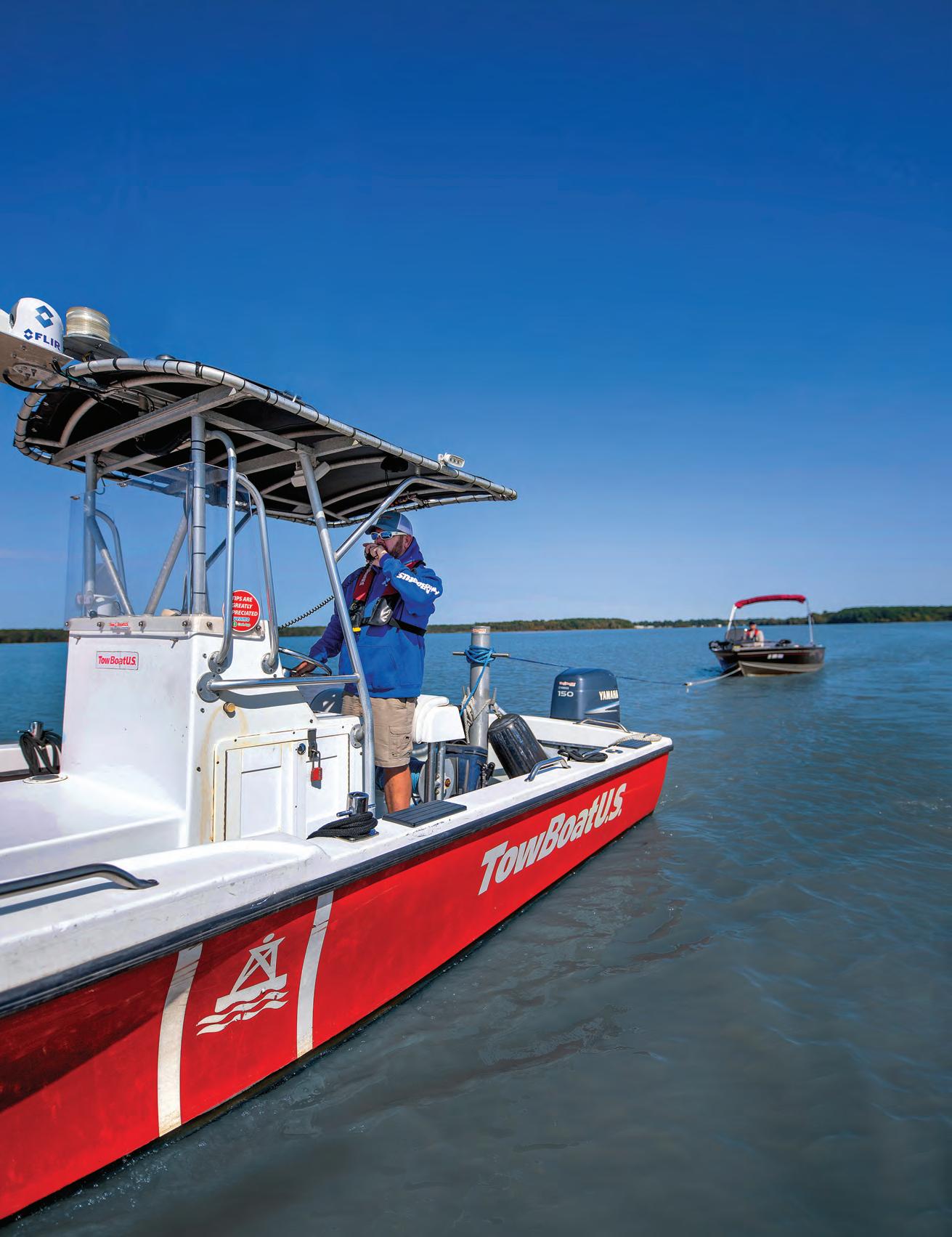




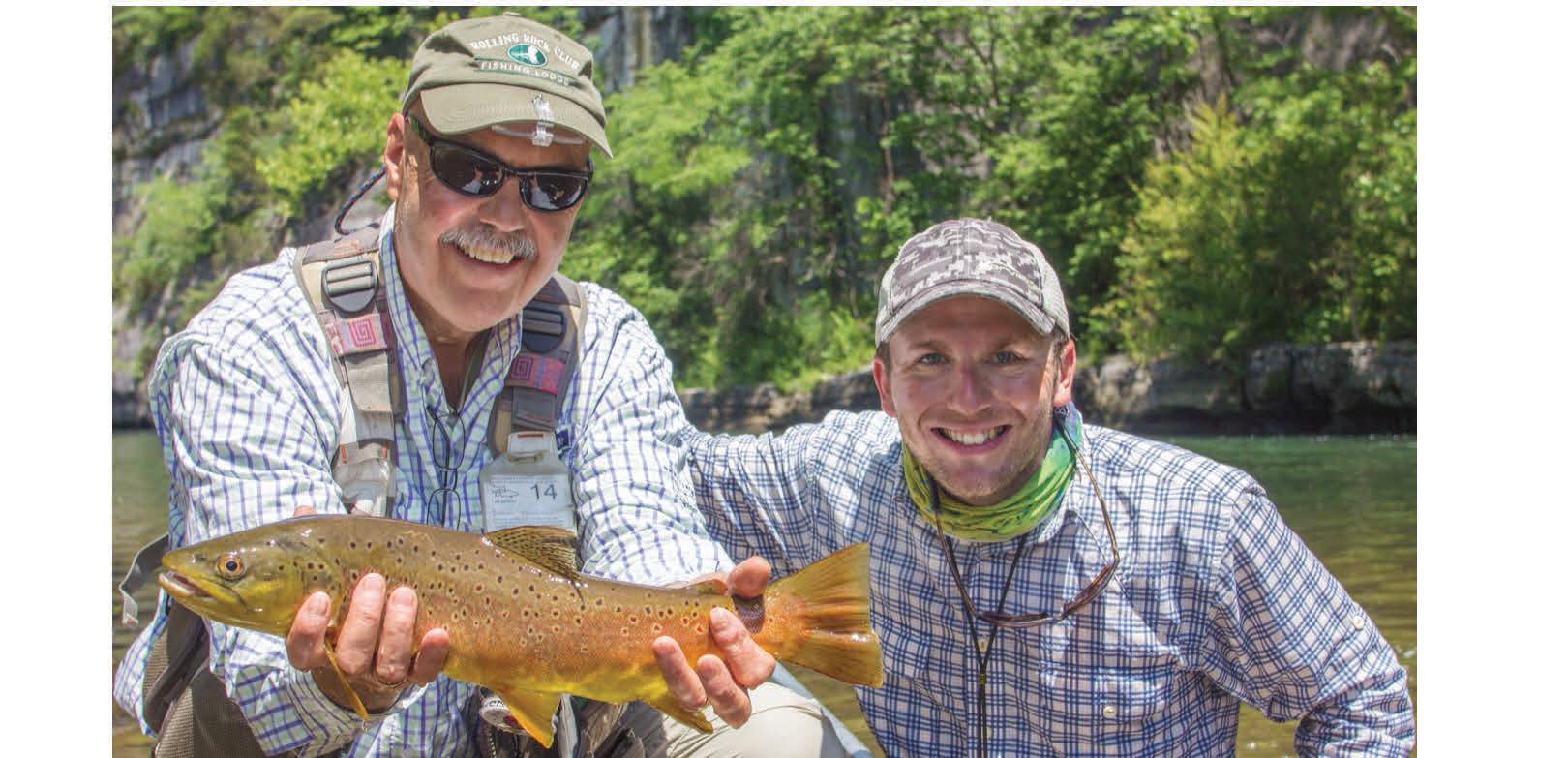



Whether for sport or for the table, pan!sh—especially slab crappies and hand-sized bull bluegills—are a favorite target among anglers. And when the air cools and leaves start to fall, pan!sh !shing heats up. Autumn can be one of the best times to catch these !sh, but it comes with a unique set of challenges. Changing vegetation, dropping water temperatures, lake turnover, and bait!sh migrations can make !nding pan!sh feel like solving a seasonal puzzle.
Fortunately, by learning to read these fall cues you’ll consistently !nd success on the water.
As lake temperatures cool and turnover occurs, bait!sh begin shi ing toward shallower cover where they can !nd safety and warmth. is movement sets o a chain reaction. Pan!sh follow the food, o en stacking up around cover like submerged wood or rocky structure. ese areas become prime real estate for fall !shing.
Weather plays a major role, too. On cold, blustery fall days, pan!sh o en slide deeper, becoming more predictable and easier to !nd with electronics. Deep basin areas in 20 to 25 feet of water can light up with schools of crappies—and sometimes bluegills—suspended and ready to bite. ese deeper !sh are o en aggressive, making for a rewarding but ethically sensitive bite. When !shing at those depths, barotrauma becomes a real issue. Released !sh o en don’t survive, even if they swim o , so it’s important to harvest what you catch, regardless of size.
On the ip side, when the weather is mild and
the sun is out, pan!sh can be found shallower, relating to weedlines, cribs, and brush piles. Healthy, vertical weeds are a magnet for fall pan!sh and can hold !sh all the way into !rst ice. In fact, some of the best fall bluegill bites happen in just !ve to eight feet of water, especially in lakes where dense, green weedbeds persist.
Lake size also in uences fall behavior. On smaller lakes—200 acres or less—dropping water temps and decaying weeds tend to concentrate !sh even more. As long as green weeds remain, pan!sh will hold tight to them. But as those weeds die o , the !sh begin to push toward deeper structure or out into the basins in preparation for winter.
Crappies in particular become more predictable in the fall, o en schooling up tighter and acting more aggressively than during other seasons. ey’re easier to pattern as they transition from summer haunts to winter basins, o en stopping along the way at deep weedlines or submerged timber. In lakes with ample wood or crib structure, these can be hotspots that hold large schools well into late fall.
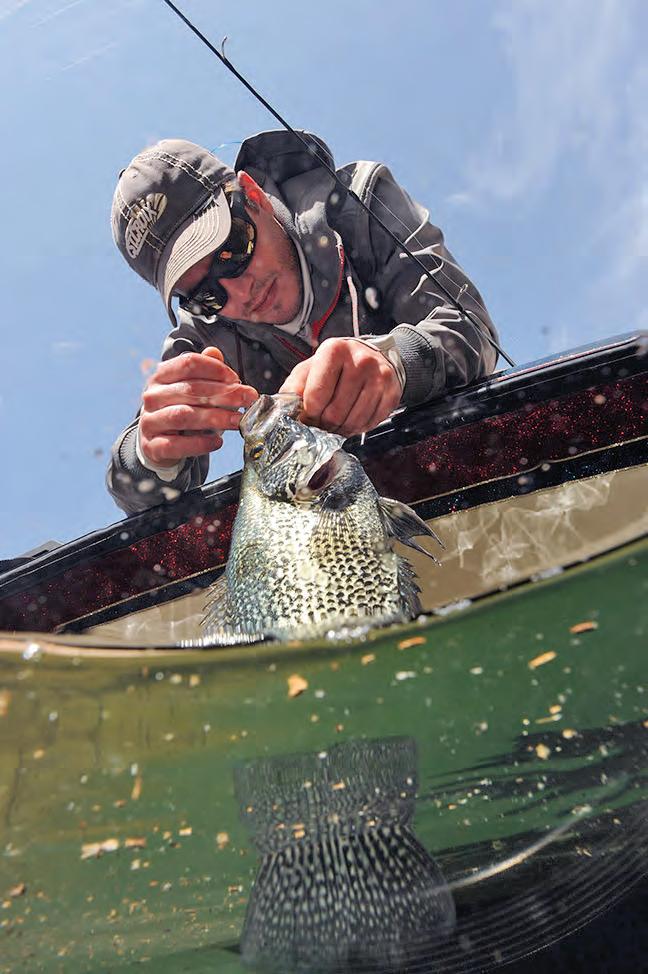
Bluegills, while more opportunistic and scattered, still relate strongly to weed edges and shallow cover when the conditions are right. eir adaptability means they can be caught both shallow and deep, but they may take more searching to !nd than their crappie counterparts.
Despite the variables, the recipe for fall pan!sh
success remains relatively consistent: follow the forage, !nd healthy weeds or cover, and adjust based on the weather. Whether you’re chasing aggressive schools of crappies in deep water or hunting bluegills in shallow weed patches, fall o ers a window of opportunity that savvy anglers won’t want to miss.





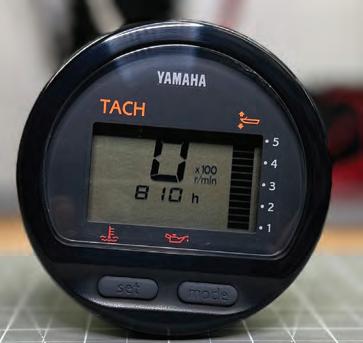




Nestled in the heart of the Caribbean, the US Virgin Islands embody a harmonious blend of natural beauty, cultural vibrancy, and laid-back serenity. ese islands are more than just a picturesque getaway; they are a living testament to nature’s rhythm and resilience, e ortlessly in tune with the world around them.
With no passport required for U.S. citizens, from the moment you arrive, the islands’ natural rhythm is palpable. e gentle sway of palm trees, the soothing sound of surf crashing against sandy shores, and the vibrant melodies of local music all echo the heartbeat of this tropical paradise. e islands’ lush landscapes, with their verdant hills and crystal-clear waters, mirror the steady pulse of life that sustains the local ecosystems and communities alike.
e US Virgin Islands’ environment is a symphony of biodiversity with world class !shing and diving. ese natural elements are not static; they dance in harmony, in uenced by the tides, wind, and seasonal changes— further emphasizing the islands’ intrinsic rhythm. is delicate balance underscores the importance of conservation e orts, ensuring that future generations continue to

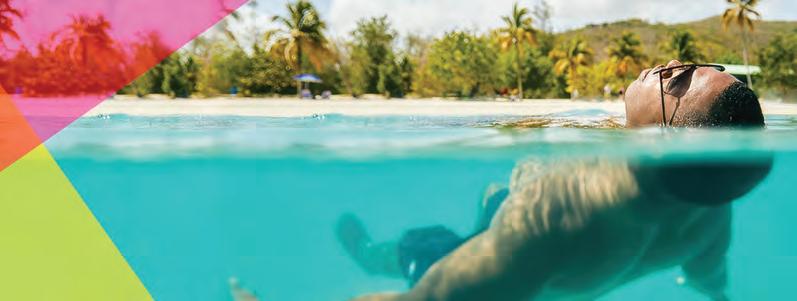
experience the islands’ natural cadence.


Culturally, the US Virgin Islands are equally in tune. e music, dance and festivals re ect a vibrant heritage rooted in African, European and Caribbean traditions. e spirited calypso beats and reggae rhythms are expressions of life's ongoing dance—celebrating resilience, community and joy. ese cultural expressions are an extension of the islands’ natural rhythm, showcasing how human life here moves seamlessly
with nature’s ow.
In a world o en dictated by chaos and rapid change, the US Virgin Islands serve as a reminder of the beauty of being in sync with nature’s tempo. eir natural, cultural and ecological rhythms o er a blueprint for sustainable living and harmony. As travelers and residents alike continue to embrace this rhythm, they uphold a legacy of balance—one that celebrates life’s natural ow and the enduring spirit of these remarkable islands. In the US Virgin Islands, being in rhythm isn’t just an ideal; it’s a way of life.
Learn more at www.VisitUSVI.com.





Buy One, Get One Free
Valued at over $90,000 MSRP, only 3000 tickets will be sold


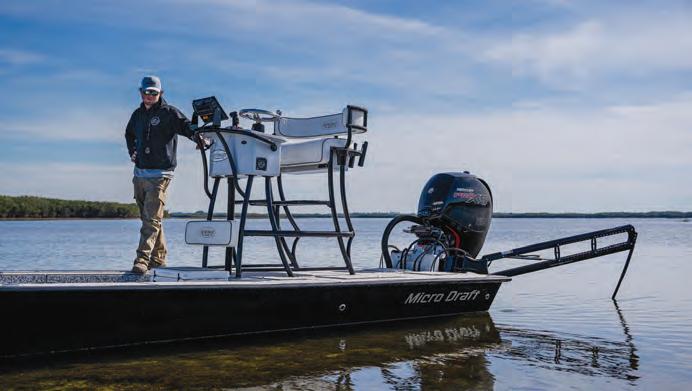



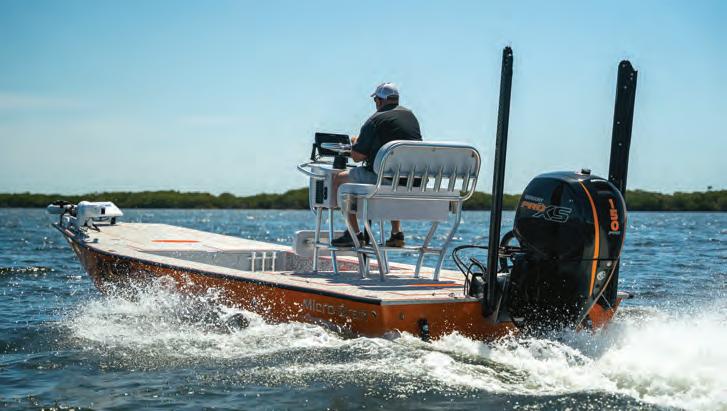
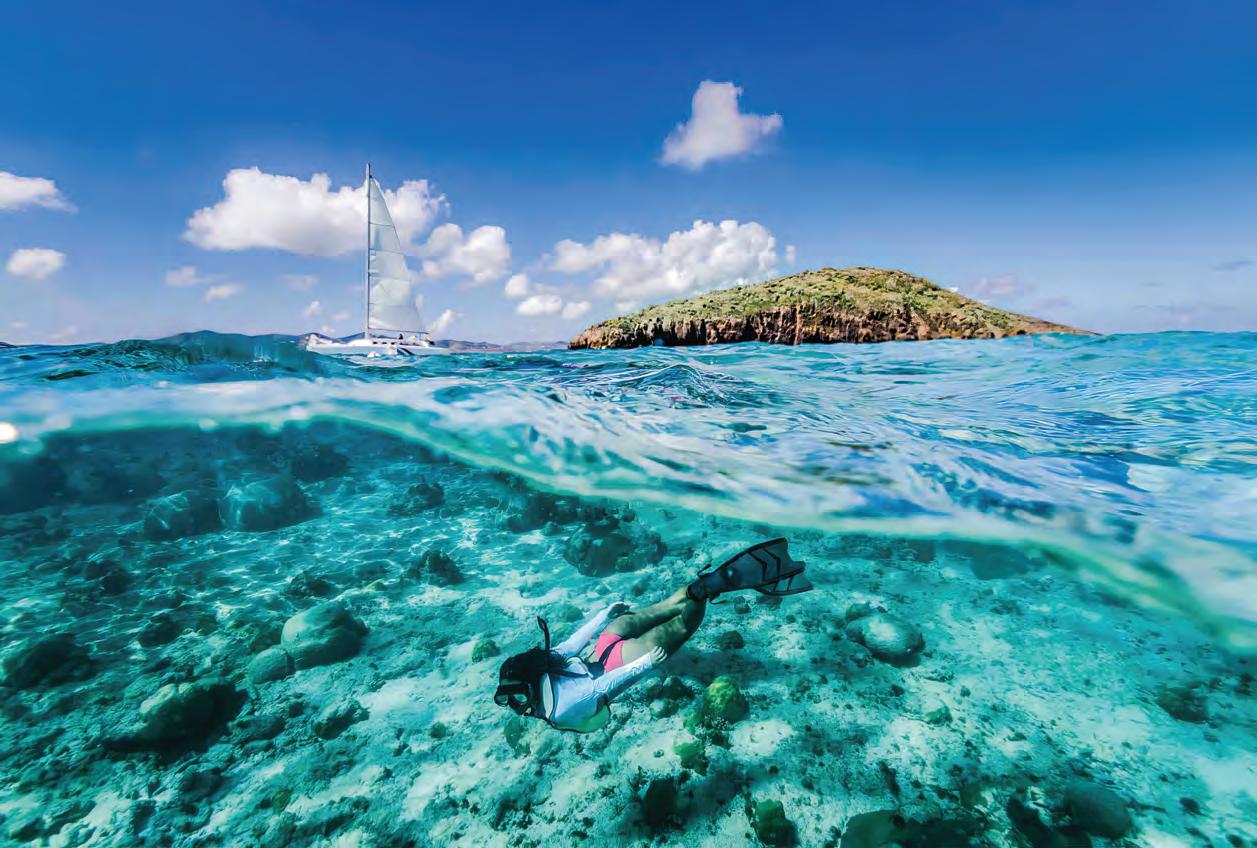



Tim Barefoot

September is a peculiar month. Some of the hottest days of the year, hurricane season is in full swing and the !rst northeast winds and cold fronts are about to occur. is is the time of year when wahoo and yellow!n can be caught right up against the beach on big schools of cigar minnows and sardines, or out in the deeper water. ere is no rhyme or reason to it this time of year; these !sh simply follow the bait schools
is is also the time of year when scamp grouper are very vulnerable. If you have the ability to keep a pin!sh trap in the water, it’s a good idea to take live pin!sh with you o shore for a number of reasons. One, pin!sh are very hearty and will live until the end of the day in the live well. Two, they are very sought a er by scamps because scamps view them as egg eaters and will kill them (eat them) so they don’t eat their eggs. And three, they are readily available at all !sh cleaning stations, at most marinas. Yes, I strongly suggest taking two or three boxes of frozen cigar minnows for bait, but live pin!sh are a ringer for scamps and other grouper/ snapper species in the deeper water.
with a cigar minnow. Proof is in the pudding...and here’s your proof. I’ve always said if you !nd the bait you !nd the !sh, and if you !nd big marks of bait (cigs, sardines, tinks, beeliners etc…) you’ll !nd the !sh. It’s always a good thing to have a “spotlight trolling motor” option to be able to sit on the bait or at least slow your dri in currents, but !sh under the bait on or near the bottom for grouper and snappers and keep the light line out for all the pelagics.
Designate one person in the crew to keep multiple light-line baits tended. Do not let this person get complacent and start bottom !shing. e same person should stay focused on the baits and working the Sabiki for whatever bait is below the boat. I’ve always said “Don’t walk in a Chinese restaurant and order a pizza,” meaning whatever is there is what they’re eating! A couple obvious execptions to this is pin!sh on the bottom and greenies/sardines; these baits are universal. We can’t keep gag grouper this time of year or American red snapper, but you can de!nitely !ll the box with other species.
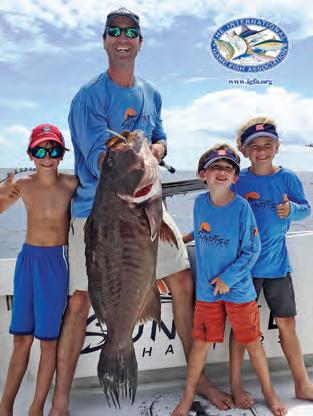
September is when you will see all the tropical species in places you don’t normally see them. All the tropical snappers are everywhere now. Frozen cigar minnows on the Squid Decoy Jig are a wonderful option, but live cigs and sardines are a “whole nother story.” As shown in the photo, the all-time IGFA world record scamp was caught on the 12 ounce
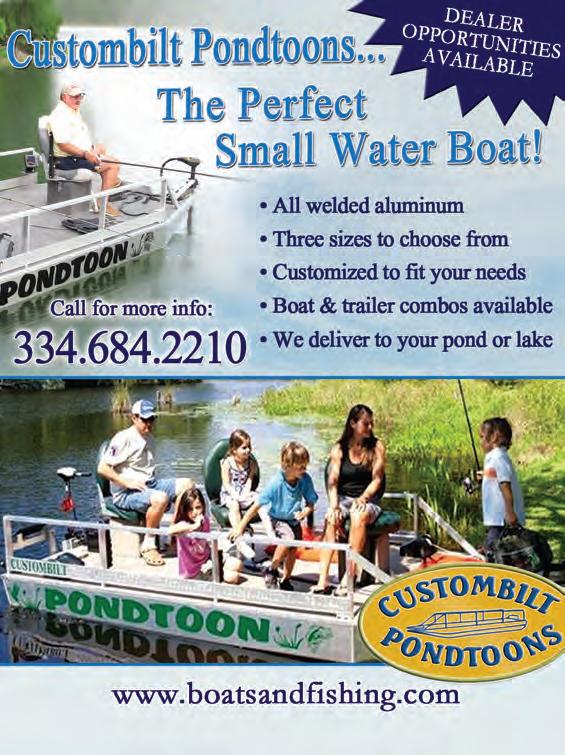
Be ready for that big bite on the light line by choosing your tackle wisely as well. Yes, you need to keep the leader ( oro and wire) size small to get the bites, but use the correct size hooks, reel and line capacity to handle bigger !sh. Like I mentioned earlier, this is the time of year when wahoo are everywhere...and nowhere. You could catch a giant wahoo or tuna inshore, or in the deep water, just be prepared for it and be ready to chase it down if need be. e kite is always a great option if you have the team that can y the kite and bottom !sh simultaneously as it can be a challenge with wind speed, direction and current.
Learn more from Tim Barefoot on his YouTube channel and at barefootcatsandtackle.com.
